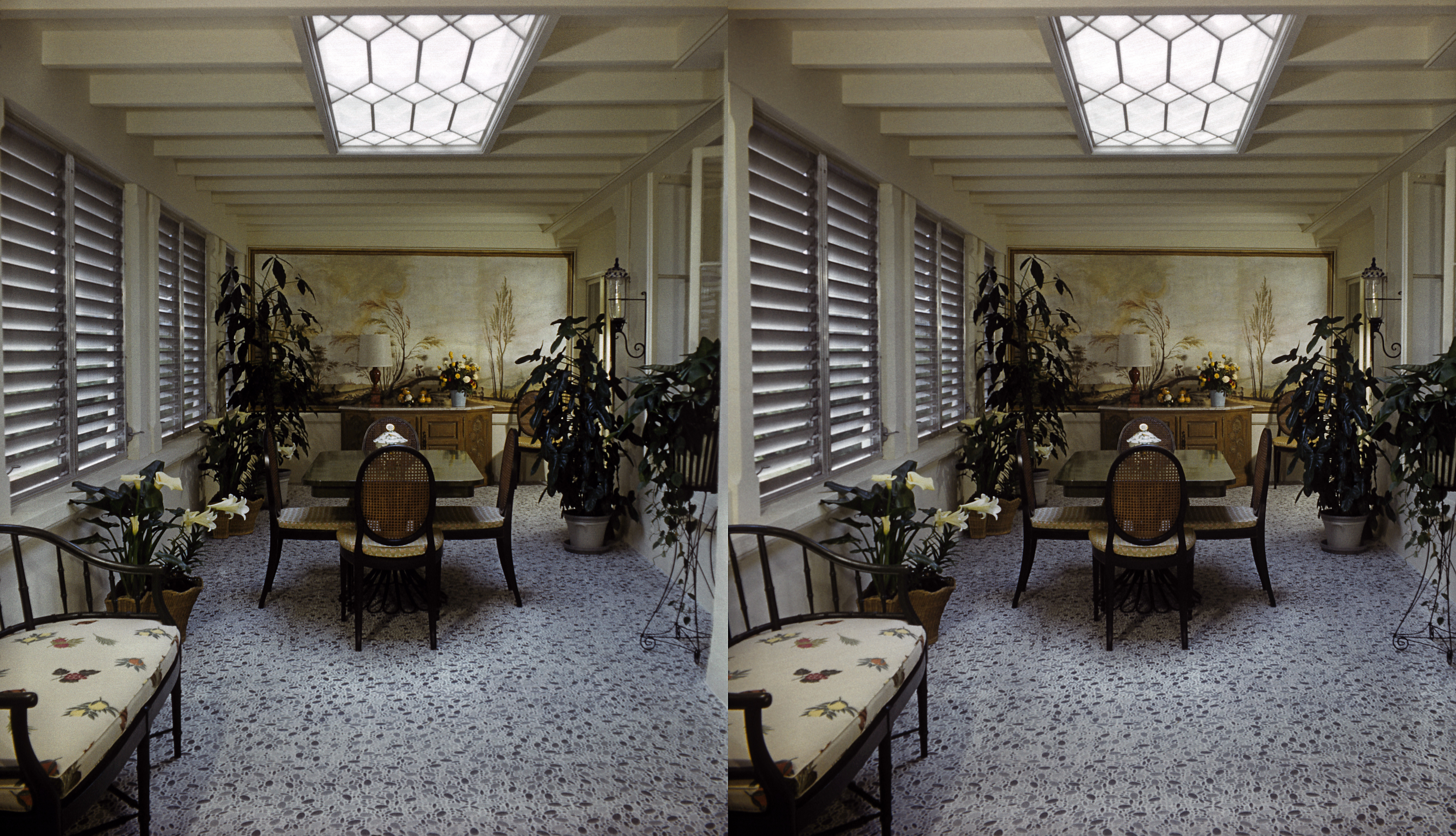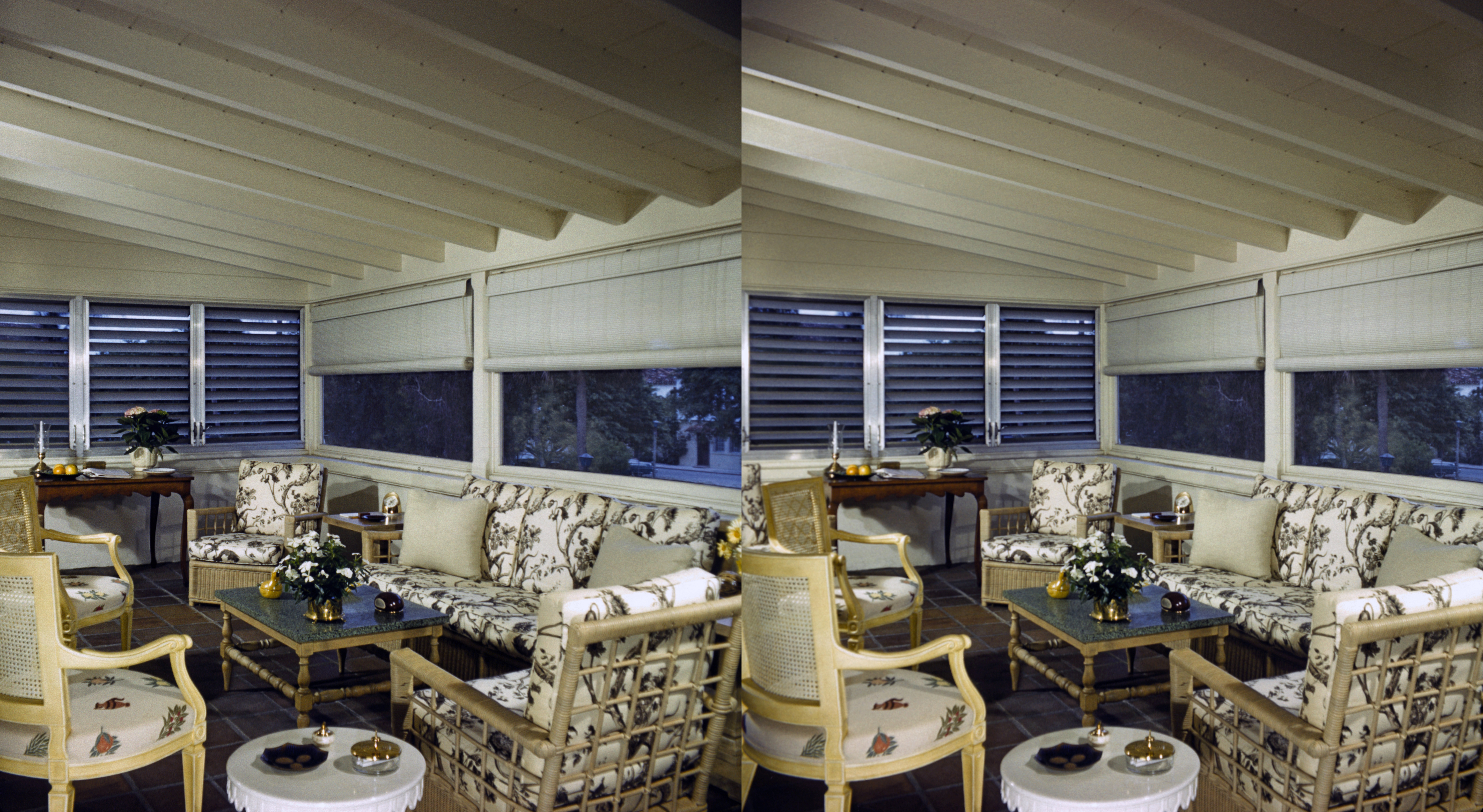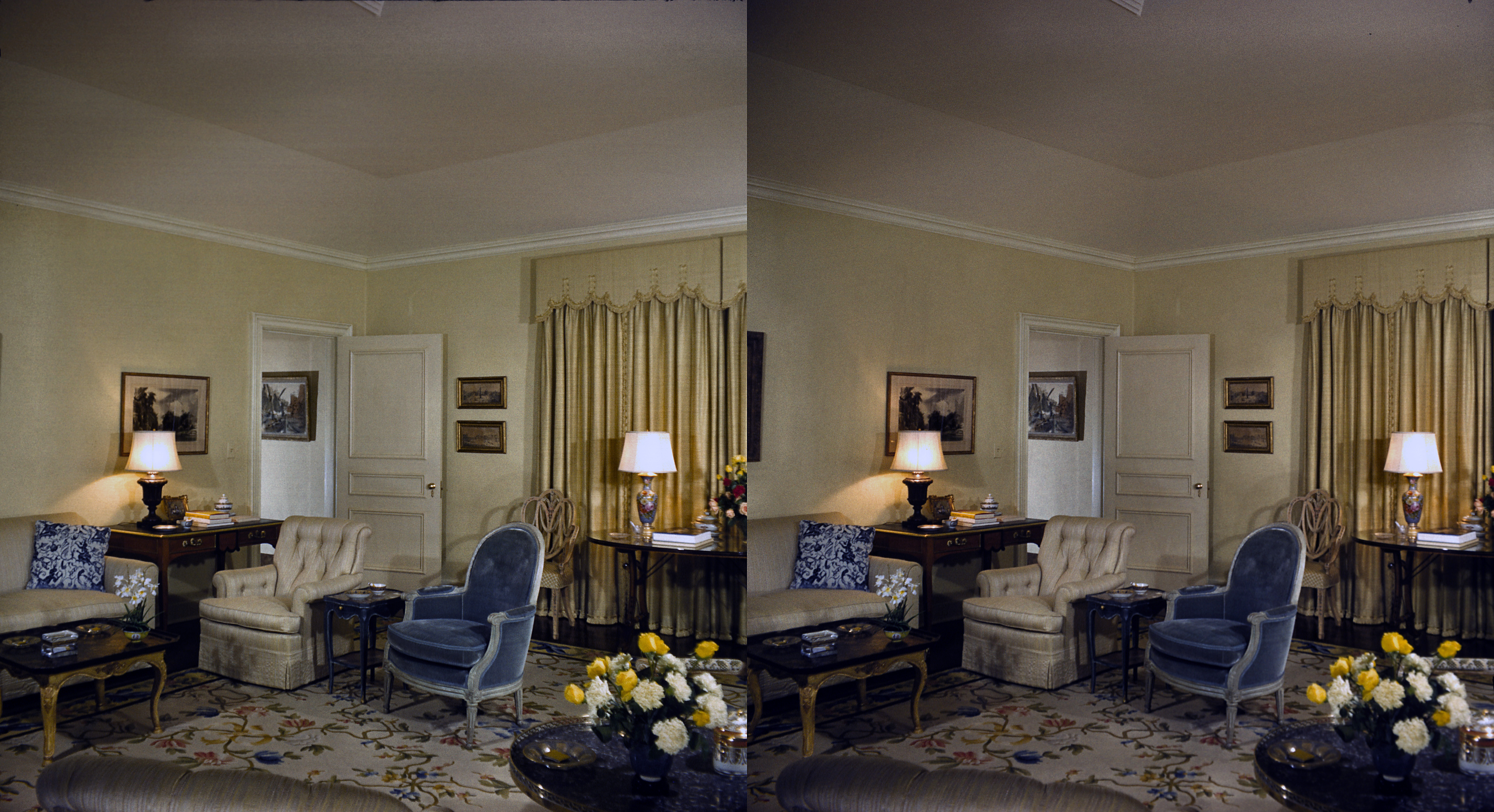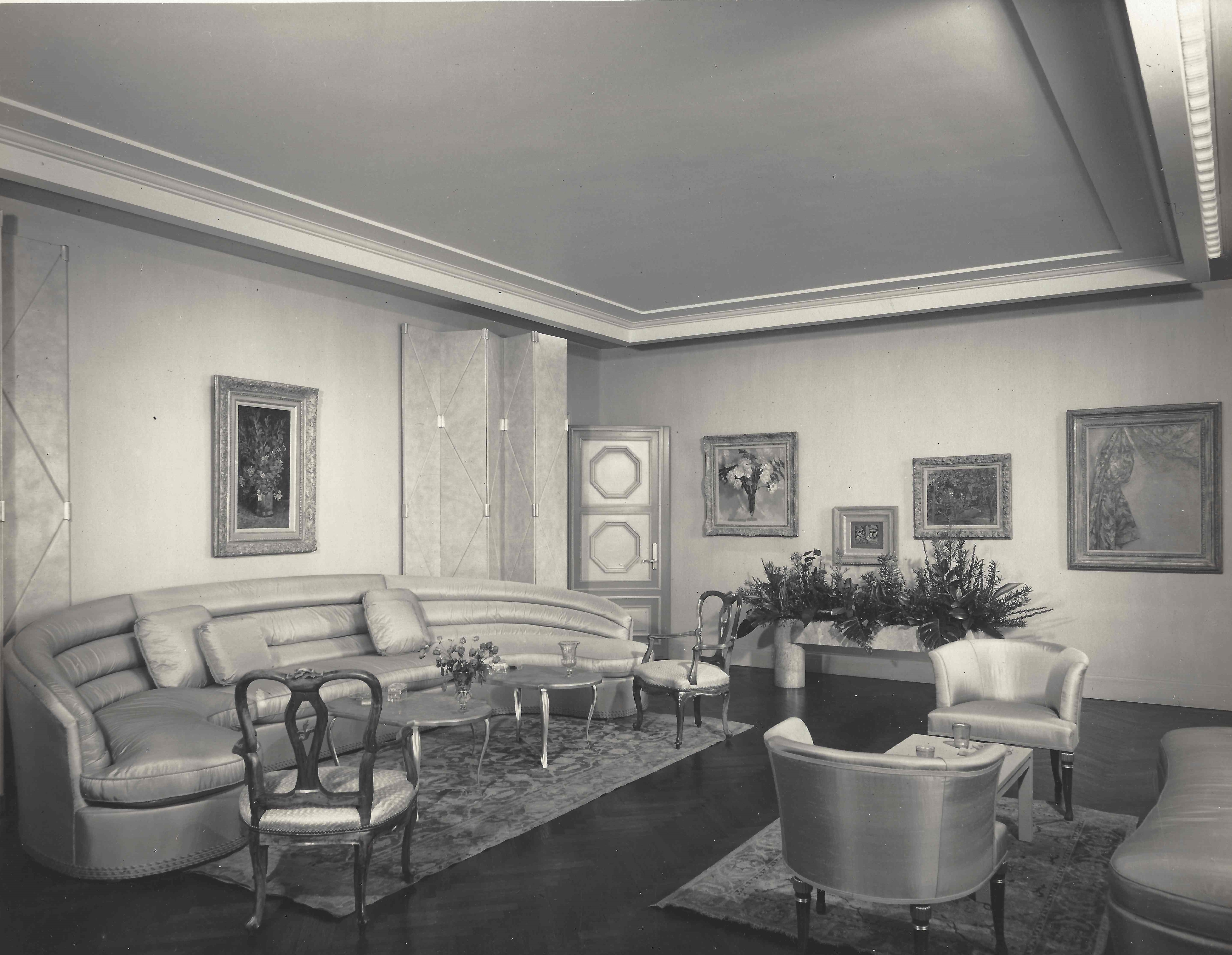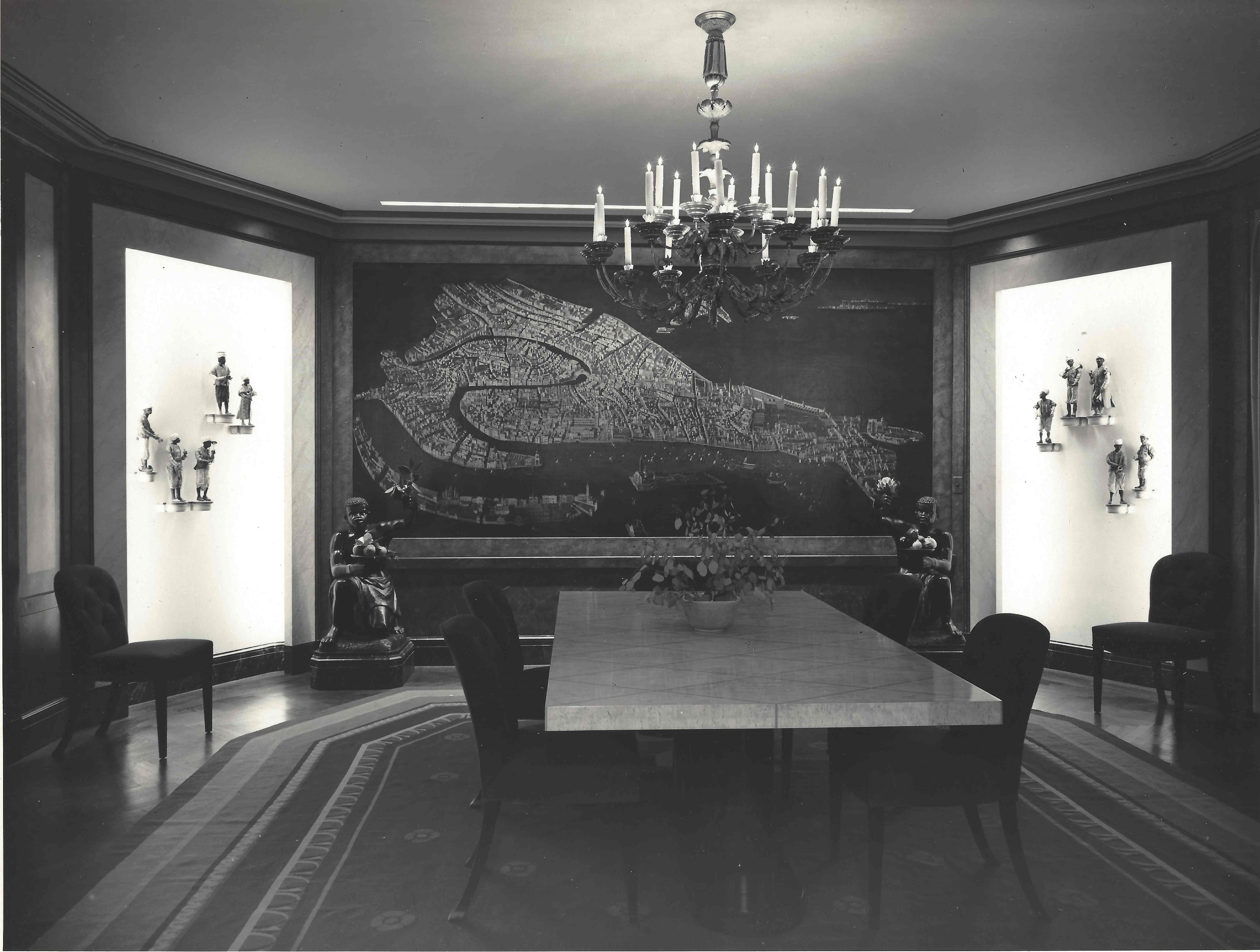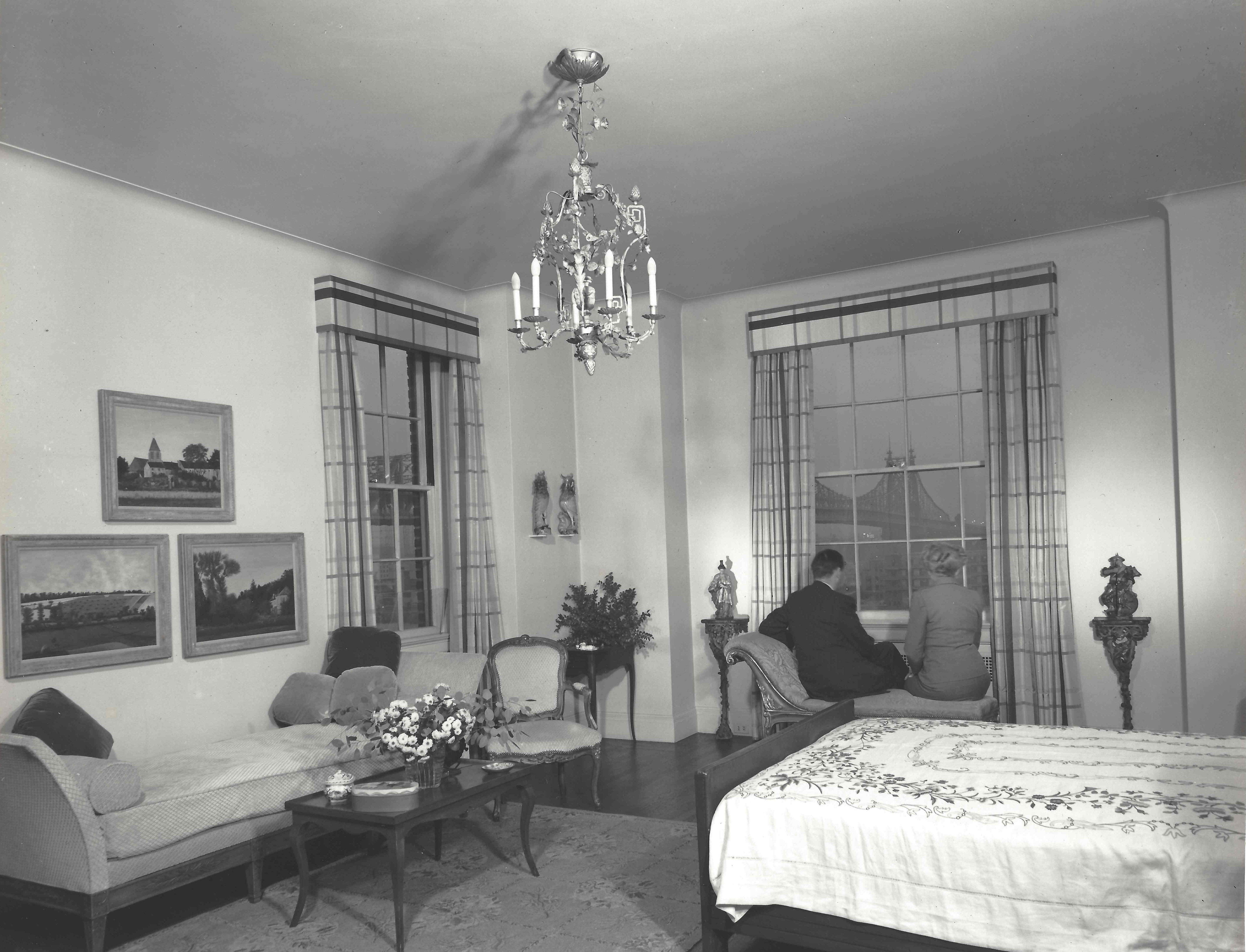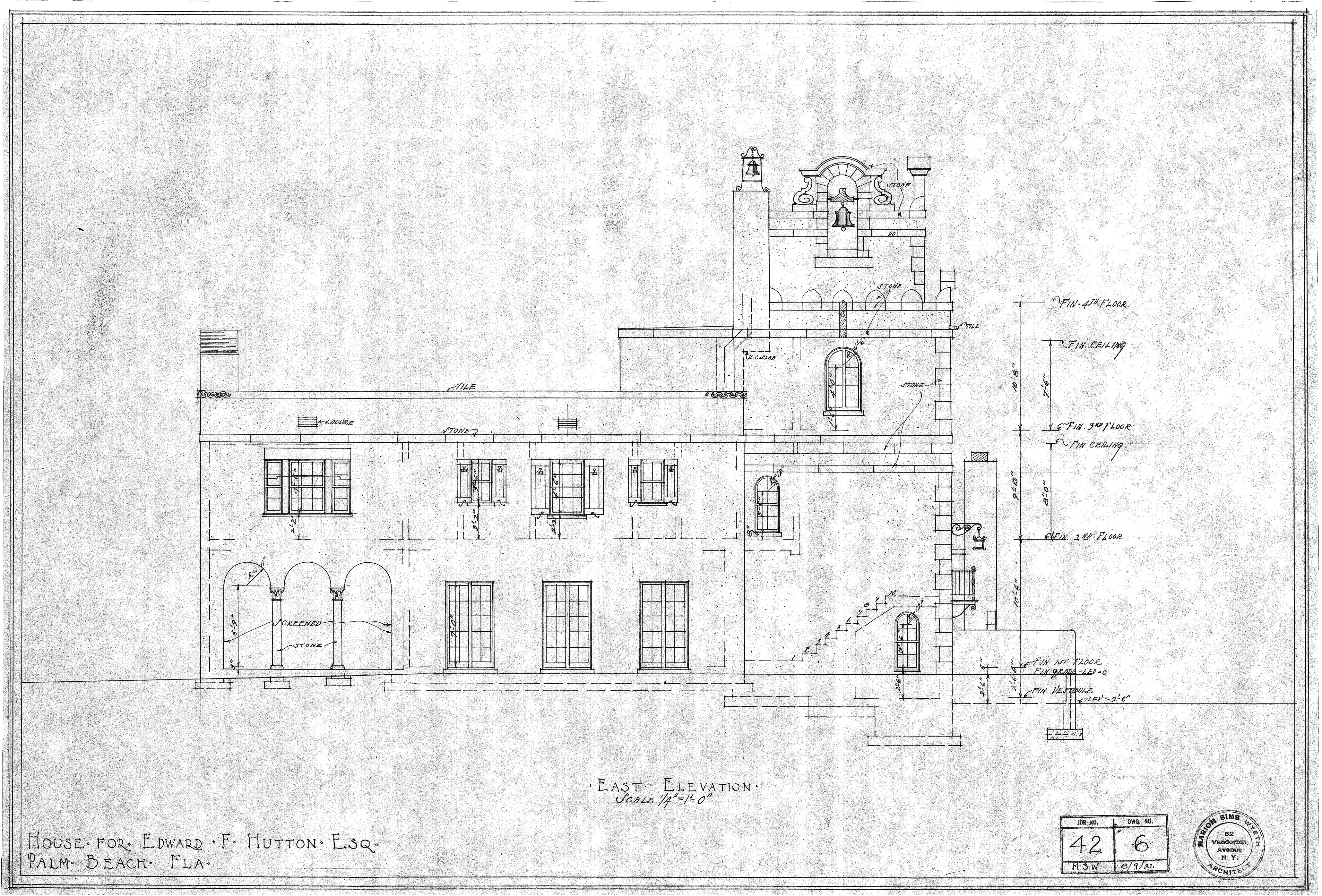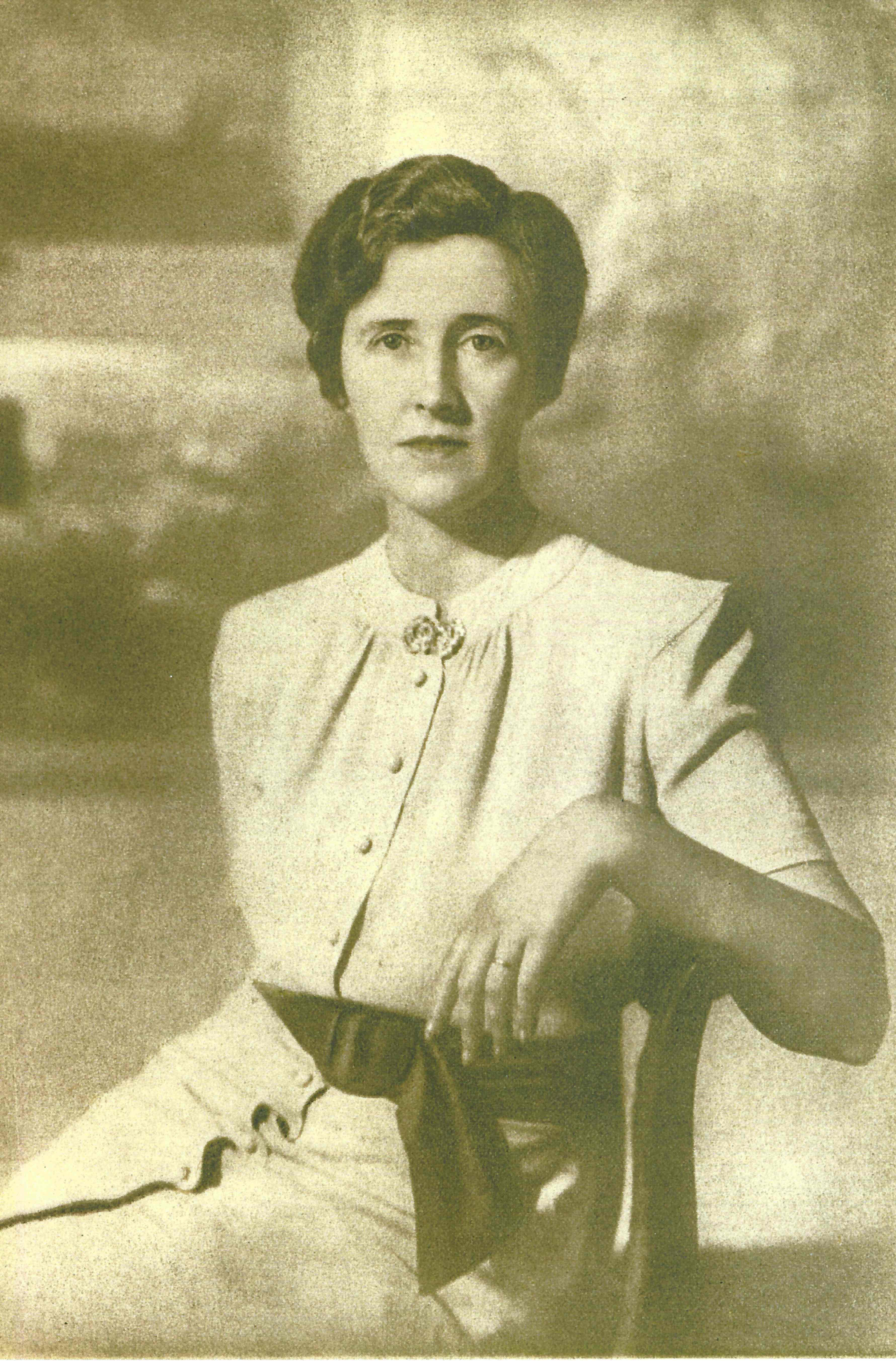
Introduction
Polly created graceful and sophisticated interior décor for Palm Beach society’s biggest names – Dupont, Ford, Whitney, Mellon, Reed, and countless other socialites.
A native New Yorker, Polly Jessup (née Pauline Daniel) moved to Hobe Sound in the 1920s with her husband John Jessup. Despite a lack of formal training, Polly’s eye for color, style, and form made her a nationally renowned interior designer whose designs were integral to the gracious lifestyle for which Palm Beach is known.

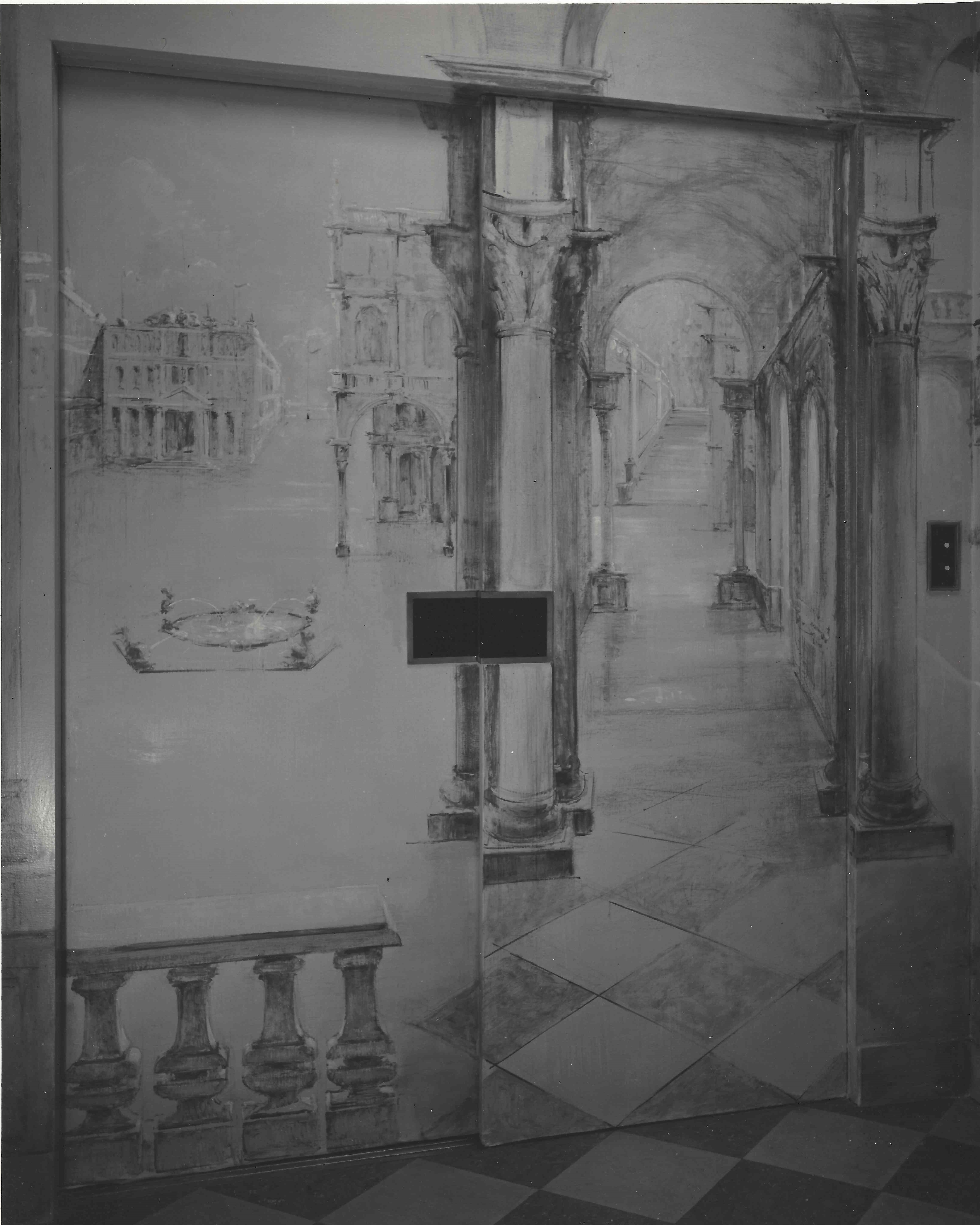
As her reputation for understanding great quality and design grew in popularity, Polly remained a private person, avoiding publicity when possible. Many of her clients were personal friends with whom she cultivated lasting relationships, so much so that some of her clients were “the third generation in their families to be ‘Jessuped’.”
Polly Jessup remained active in interior design for over sixty years, until her death in her Palm Beach home at the age of 89. Polly’s quiet, modest demeanor belied her extraordinary talent and success; her influence among the upper echelons of society was wide-reaching.
Polly Jessup’s taste is simply beautiful…her extravagant insistence upon quality, and quality only, has not been equaled, and her success has been without limit, and every bit of it is deserved.
1985
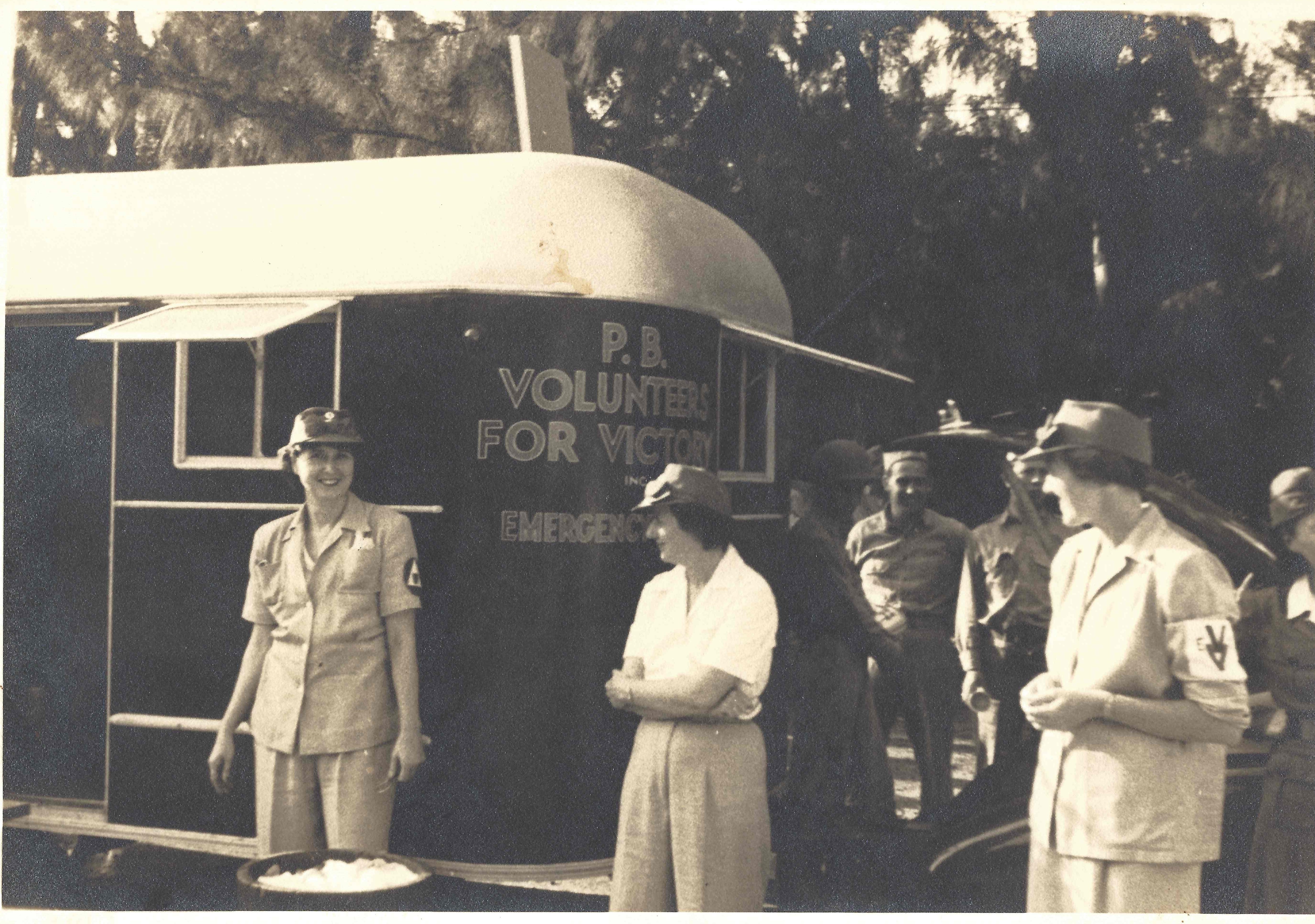
Credits
This exhibition is generously underwritten by the Daniel Family. The Jessup Collection is on loan from The Society of the Four Arts, Palm Beach, FL.
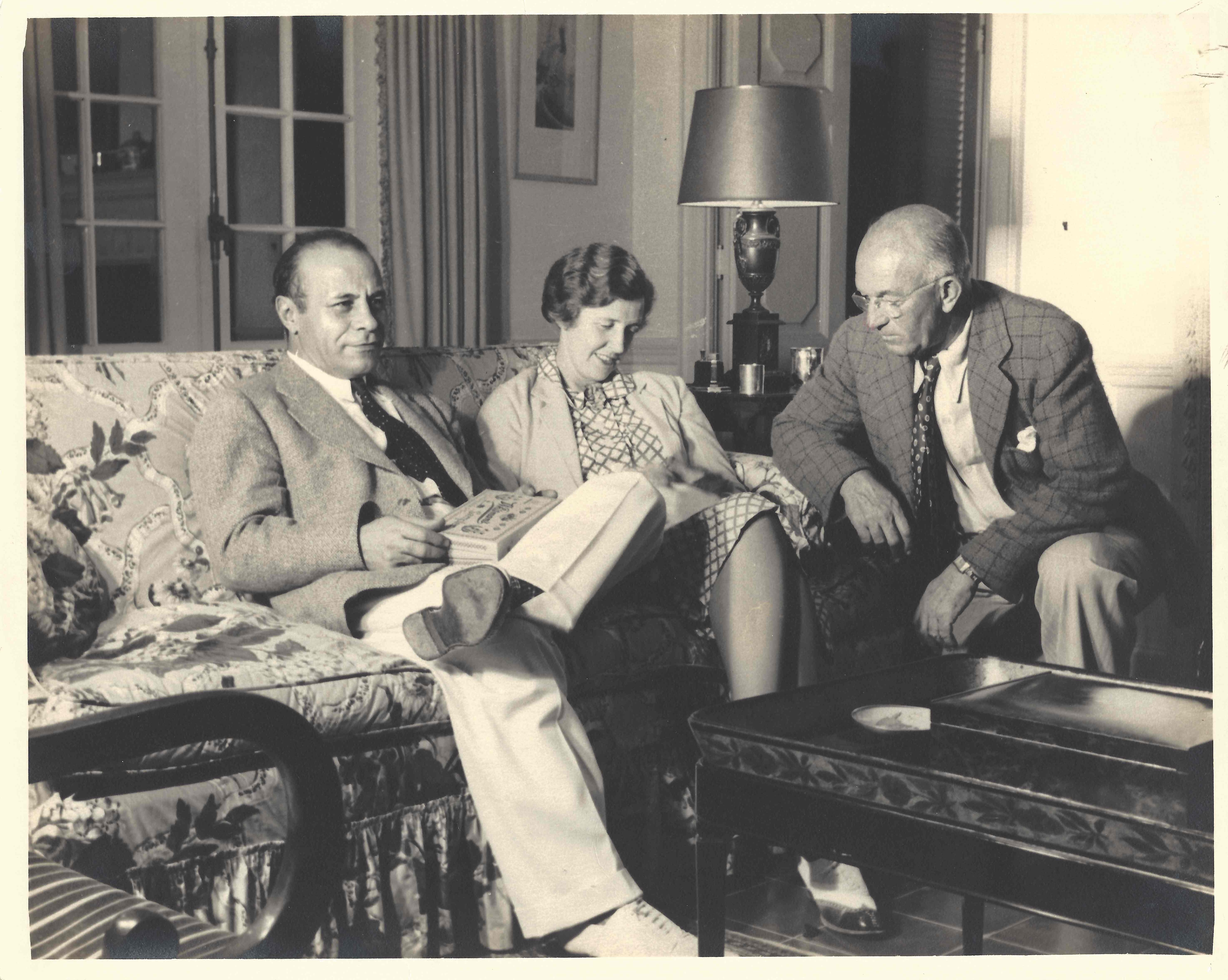
The Beginnings of Jessup, Inc.
The Beginnings of Jessup, Inc.
Polly’s husband, John Jessup, enjoyed woodworking, and together Polly and John put their talents to work making custom furniture for Palm Beach residents. One of their first commissions was to make furniture for the First National Bank of Palm Beach in 1927. Jessup, Inc. opened a showroom in town on Worth Avenue that moved to different storefronts throughout the years, and a warehouse on Georgia Ave in West Palm Beach. Polly had an office in her home at 209 Phipps Plaza, a popular locale for design professionals throughout the years.

Jessup, Inc. gained commissions as the result of a disastrous hurricane, which devastated the area in the summer of 1928. After the storm passed, Polly sent workmen out to salvage priceless pieces of furniture found floating in Lake Worth. Her warehouse in West Palm Beach was one of few buildings standing, and she quickly went to work making furniture for those who were affected by the hurricane.
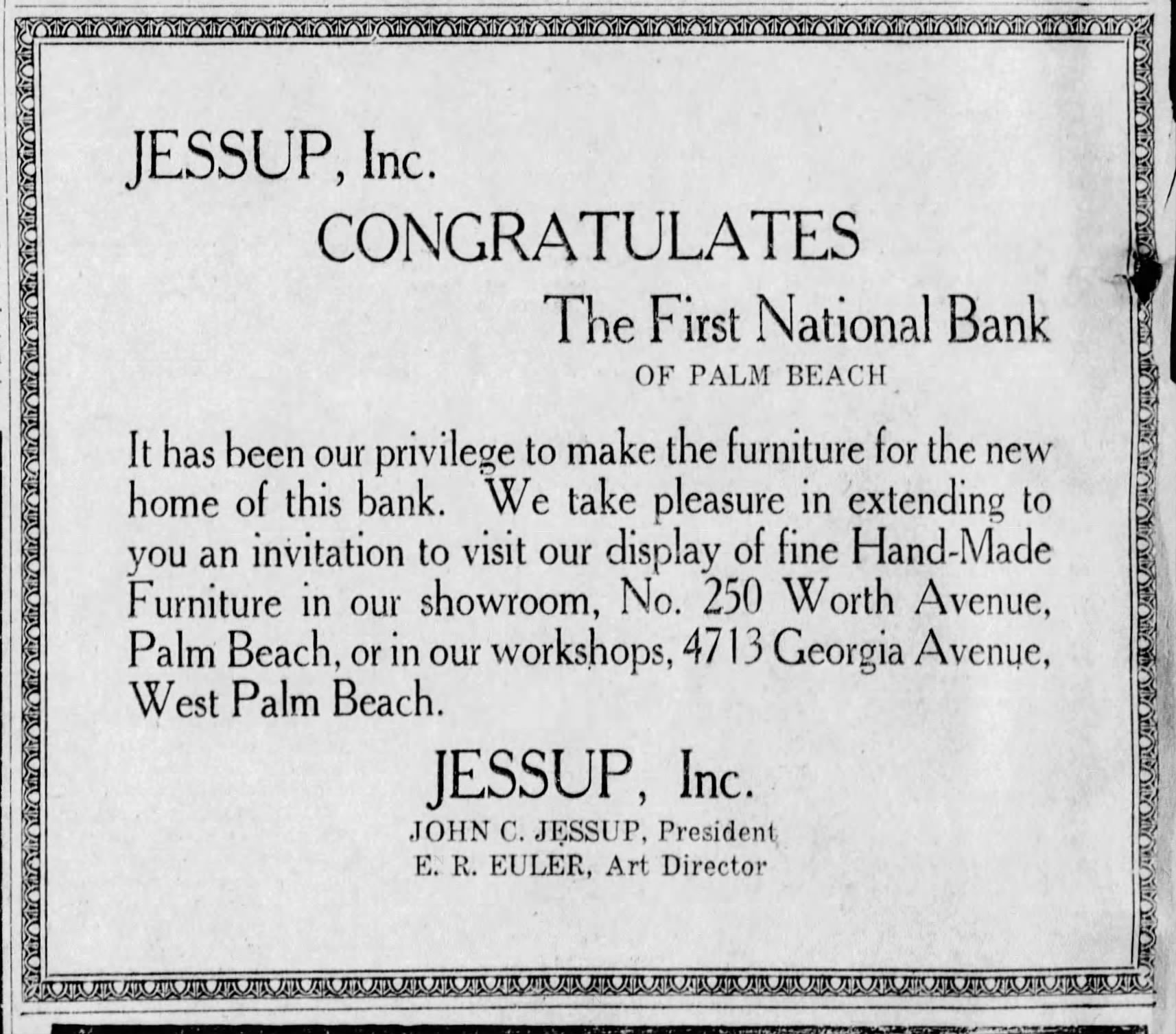
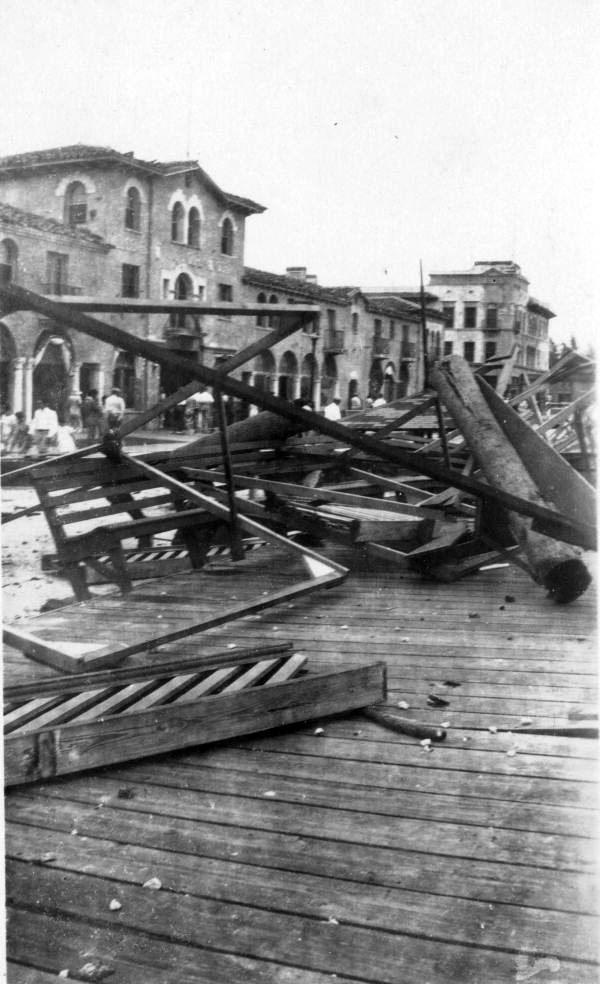
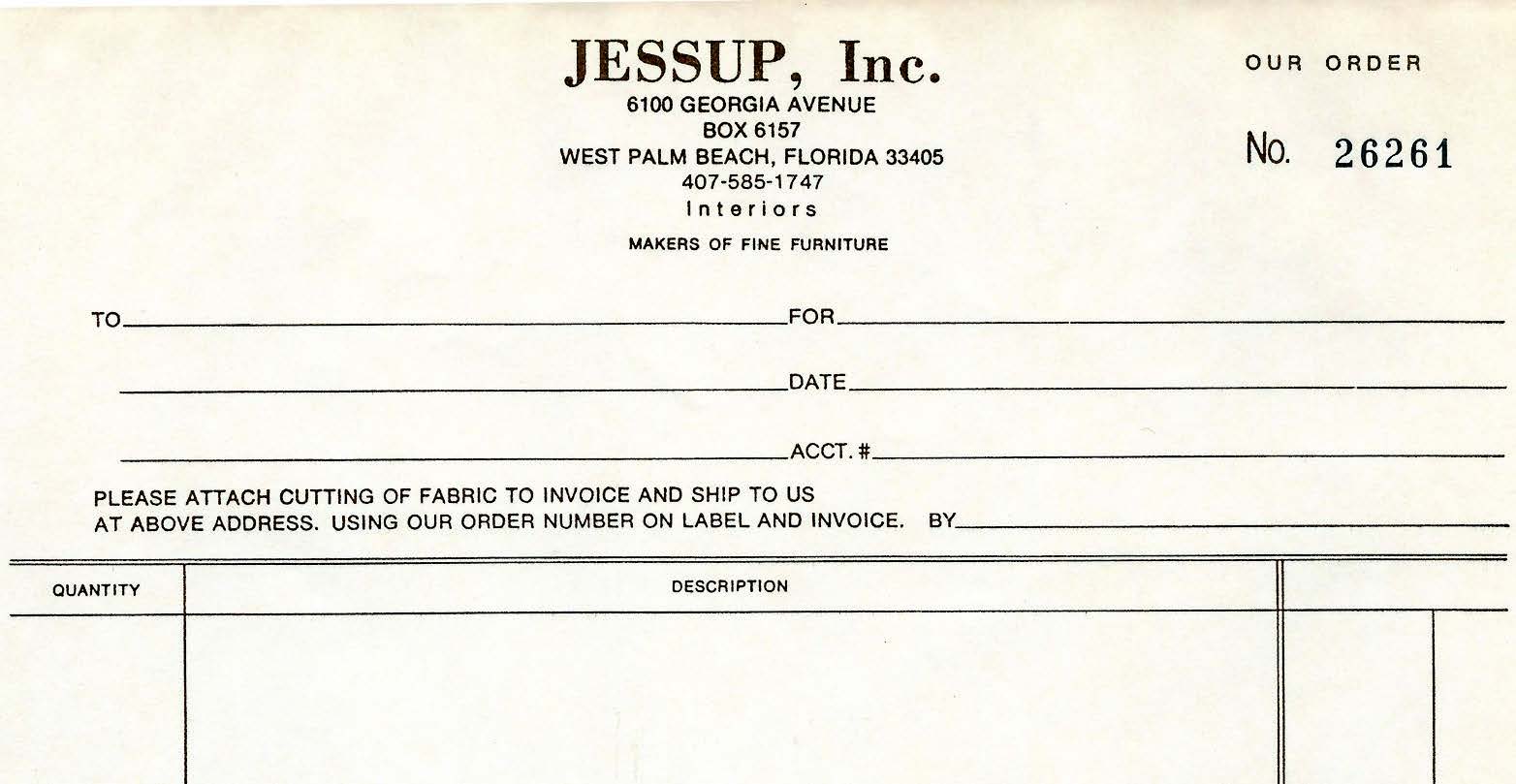
The company grew swiftly, and Polly Jessup’s unique armchairs, lampshades, and curtains became staples in many Palm Beach homes. By Polly’s death in 1988, Jessup Inc. employed over fifty craftsmen, carpenters, and decorators.

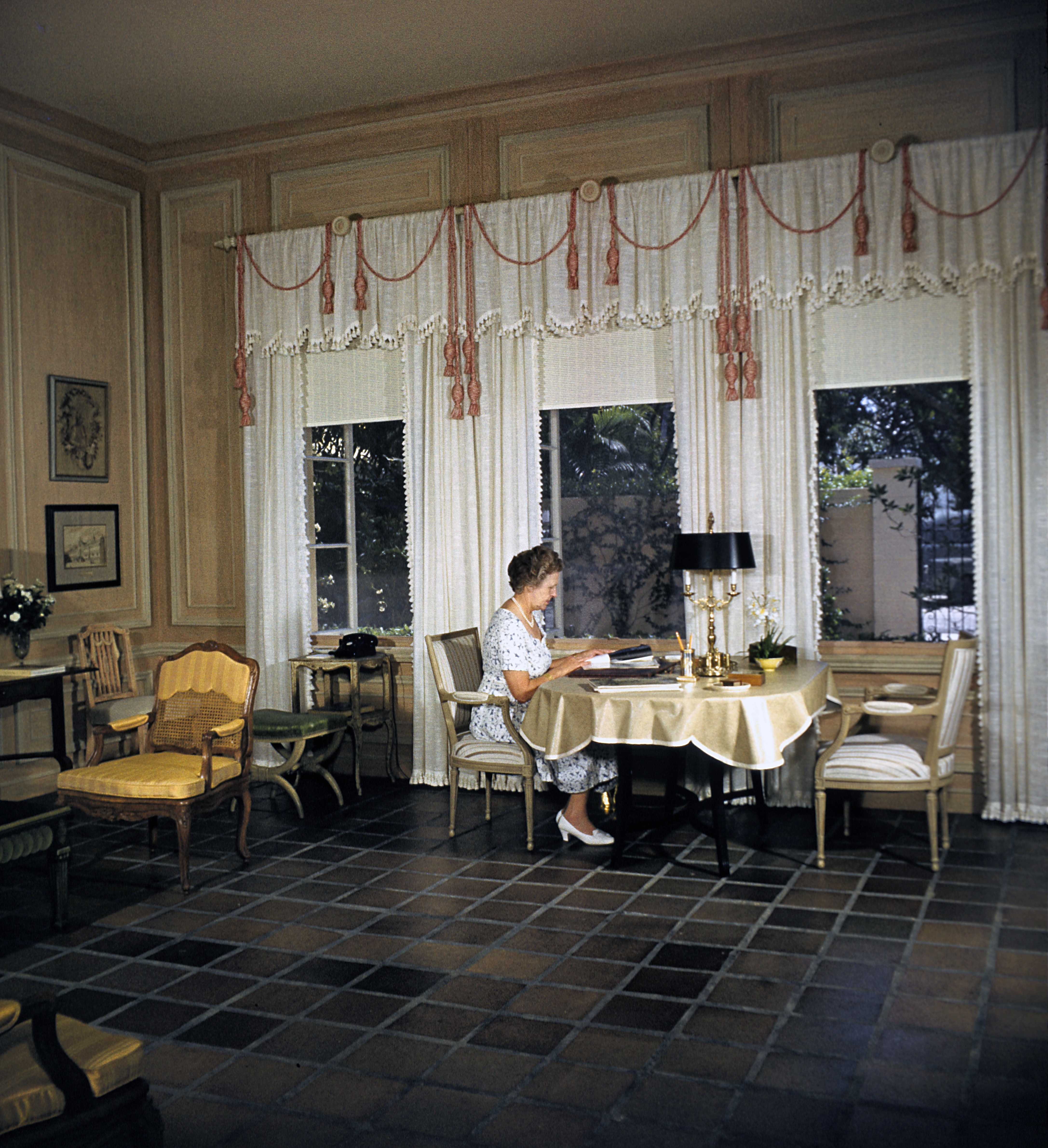
The Influence of Polly Jessup
The Influence of Polly Jessup

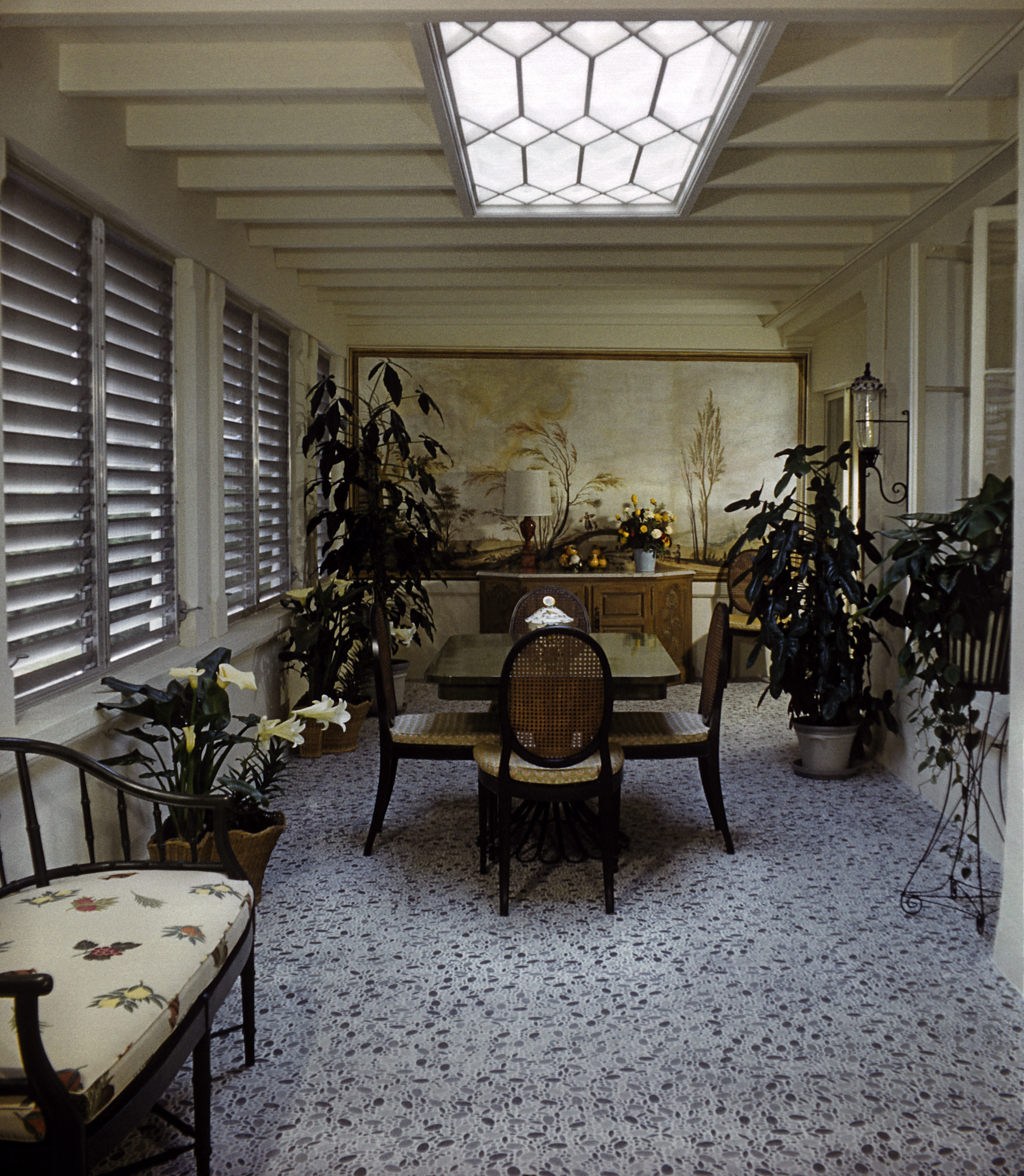

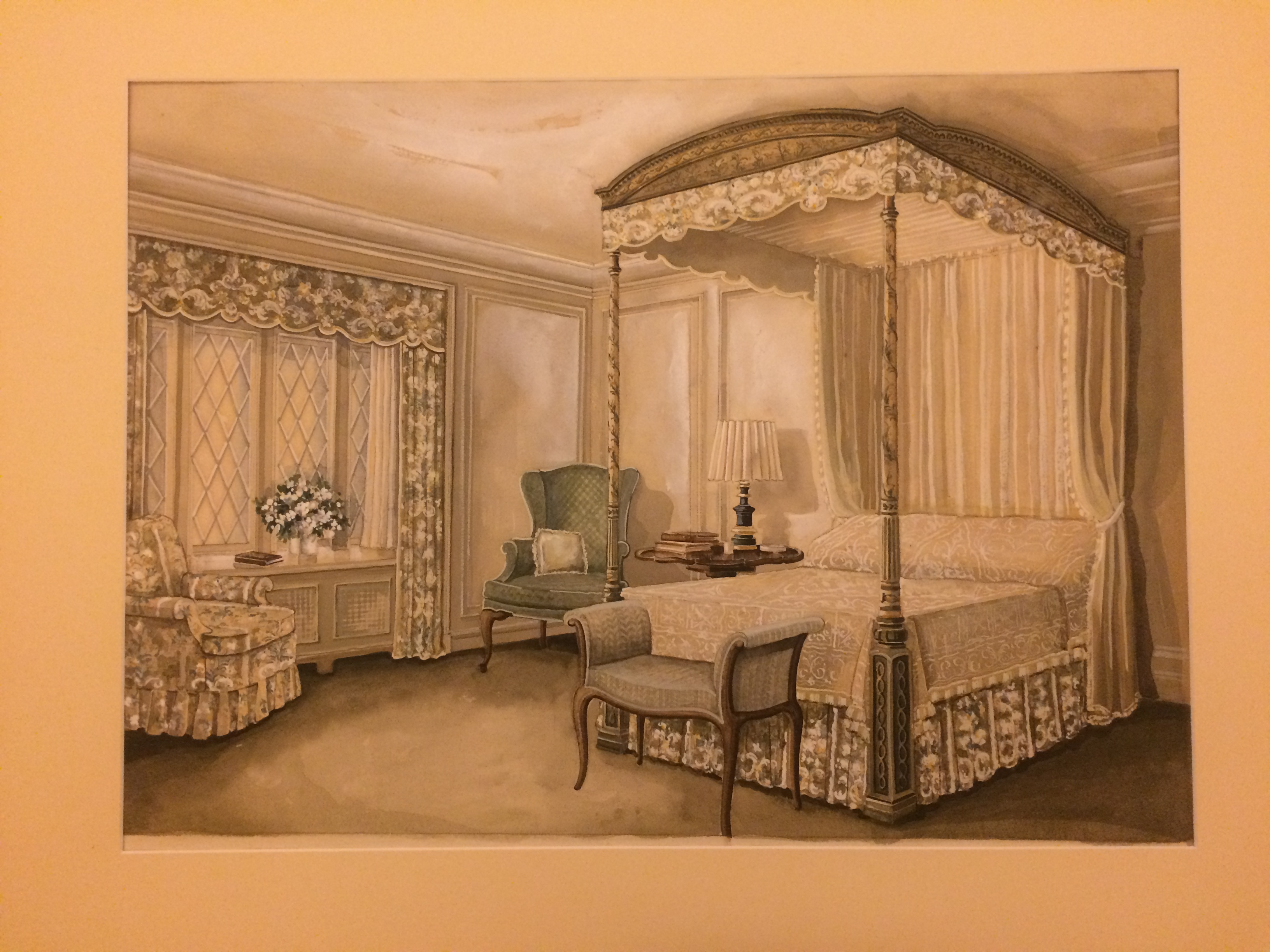
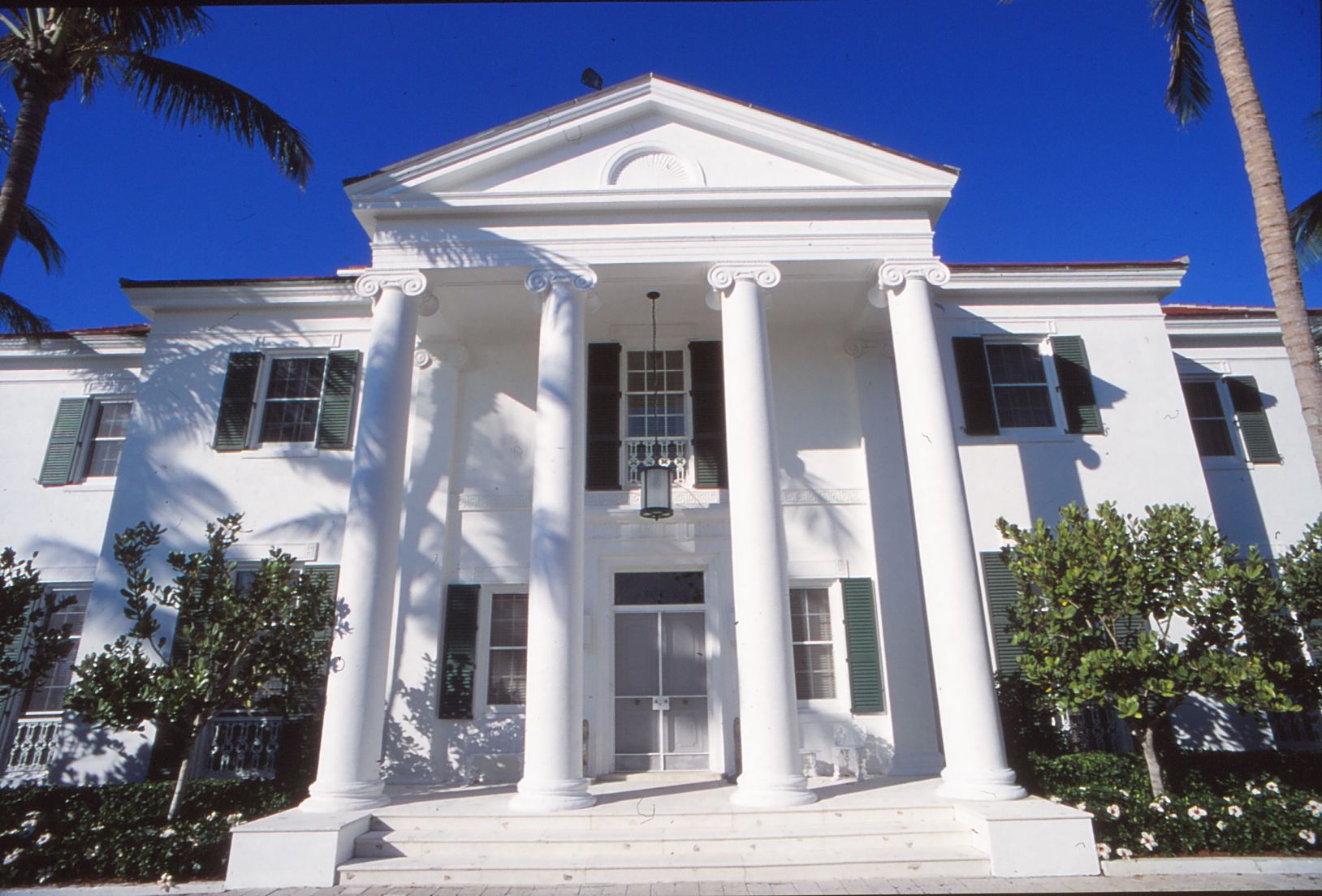
Swenson House
Swenson House
The landmarked Neoclassical house on South Ocean Boulevard was designed in 1938 by Marion Sims Wyeth for Mrs. Edward Swenson. Swenson was a well-known Palm Beach resident recognized for her generous support of the Good Samaritan Medical Center in West Palm Beach, an earlier commission by Wyeth.

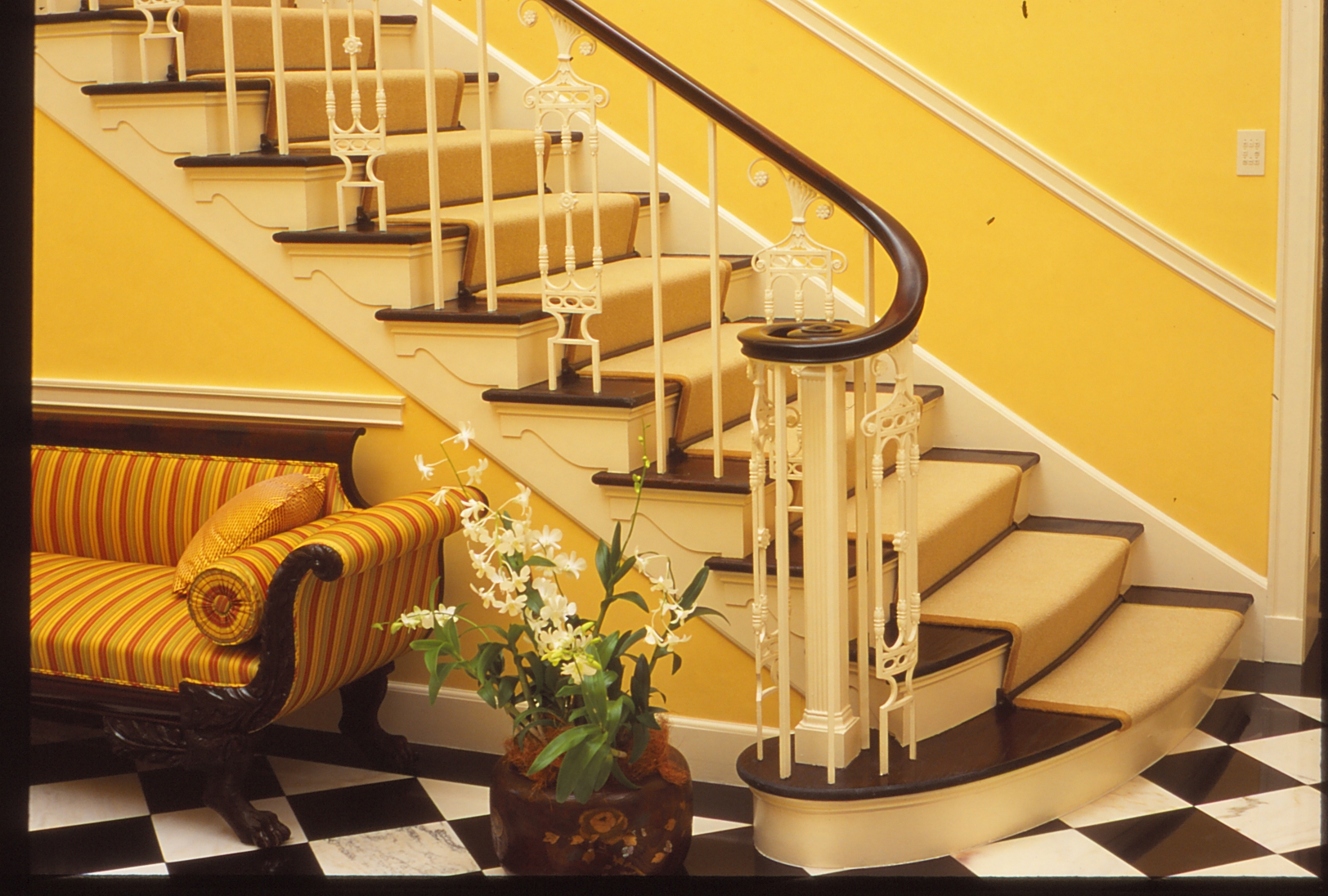
The South Ocean Boulevard house was awarded the Preservation Foundation of Palm Beach’s 1999 Ballinger Award for outstanding restoration and rehabilitation of historic architecture in Palm Beach. Many of the original furnishings and finishes were restored, indicating the timelessness of Polly Jessup’s work.
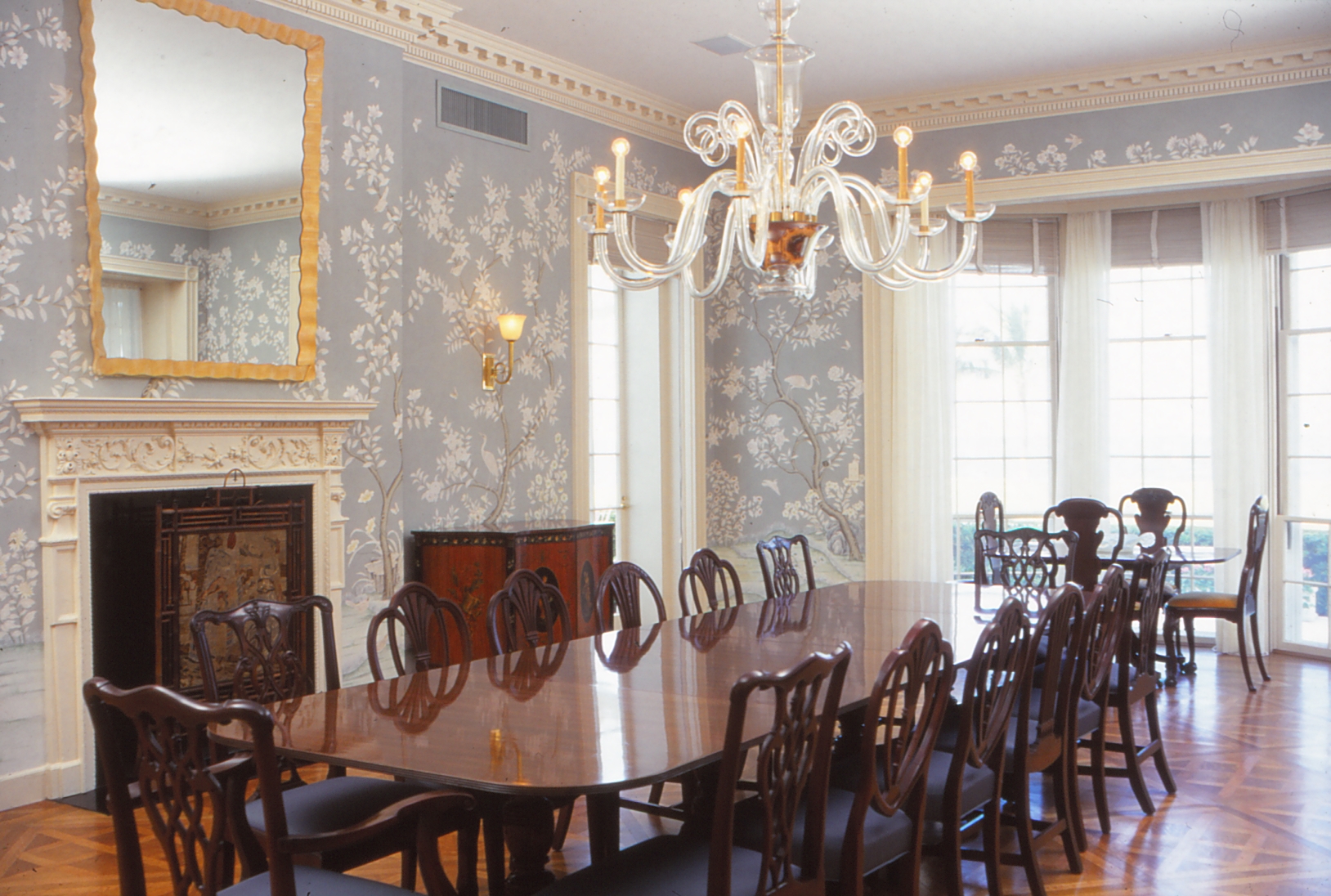
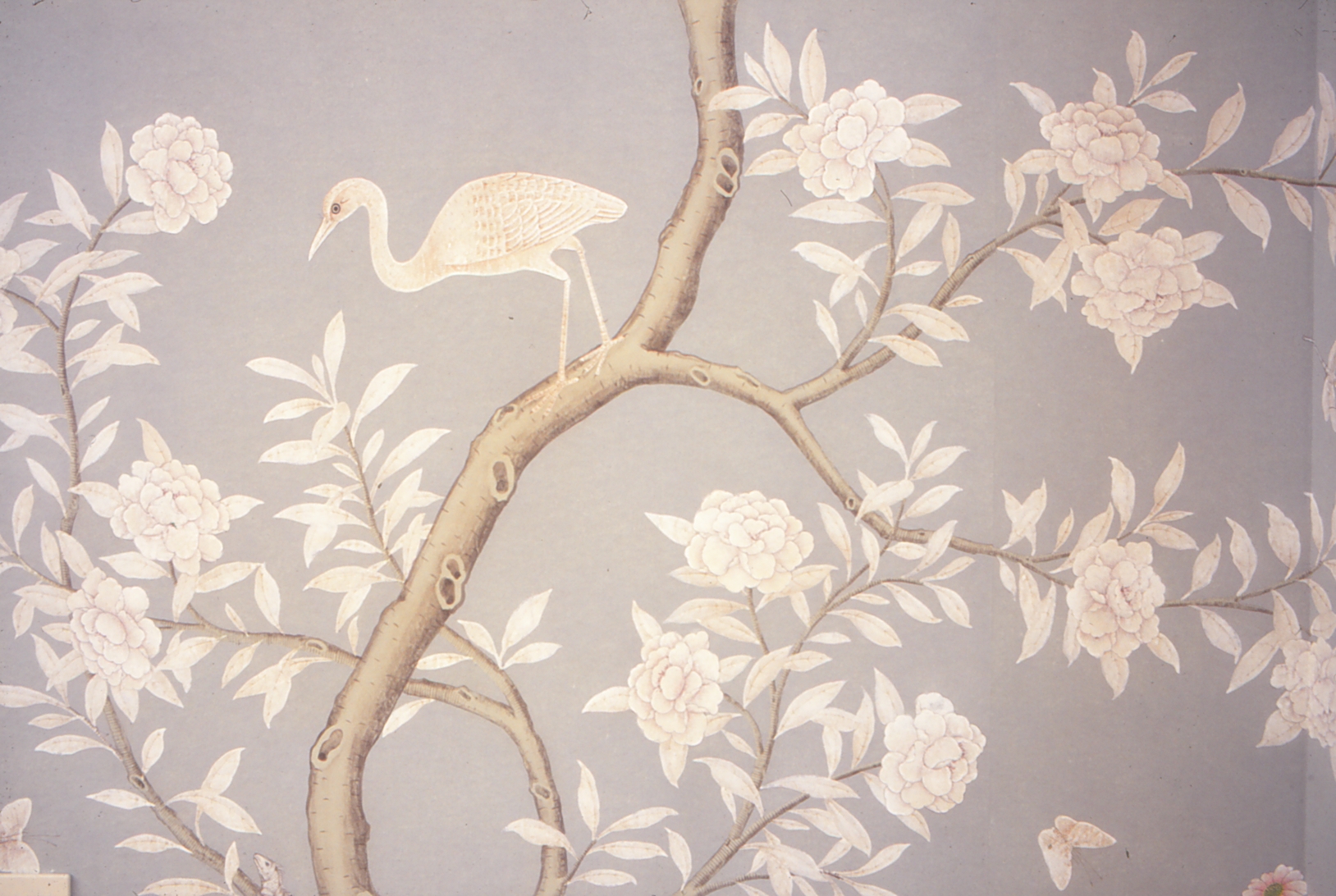
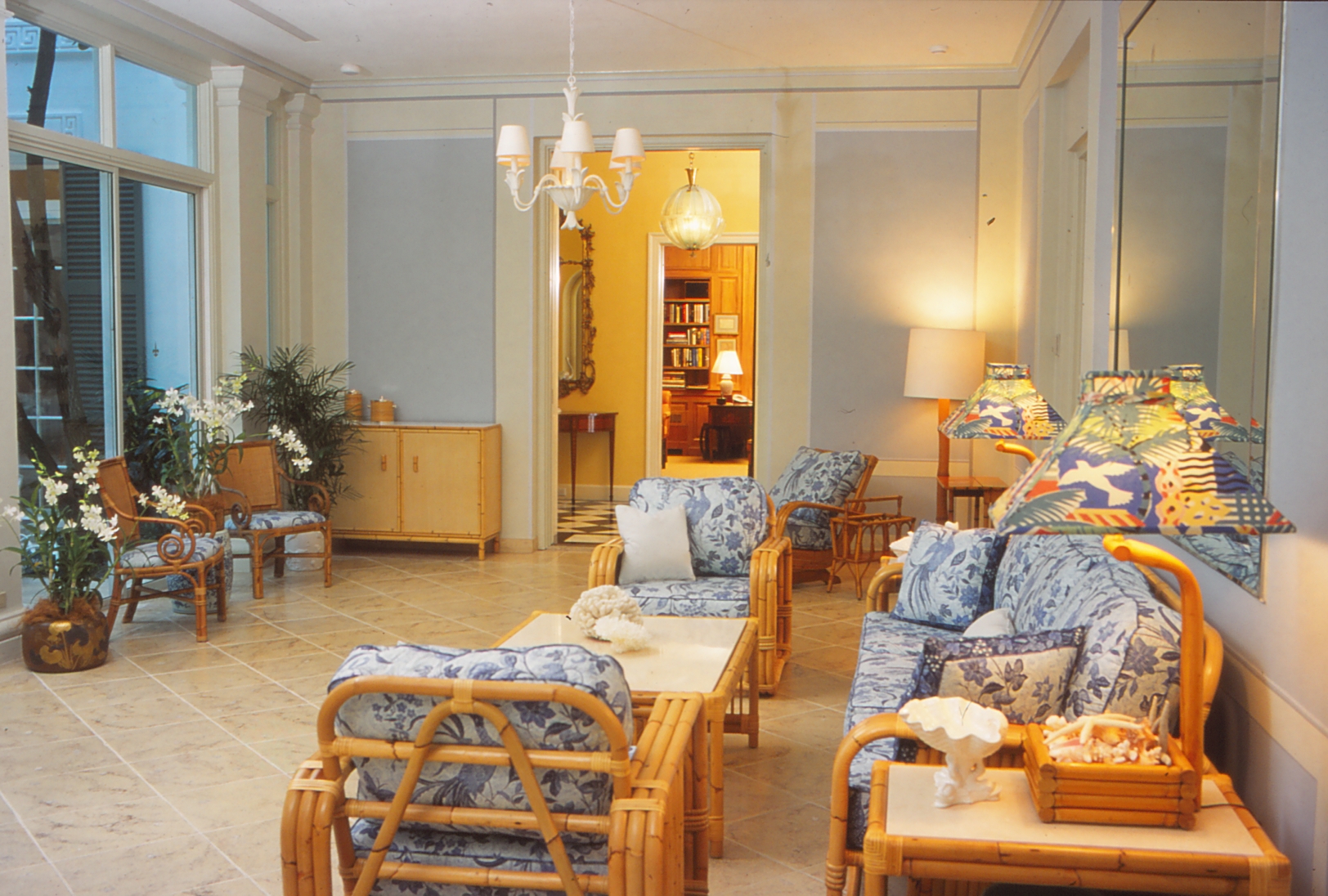
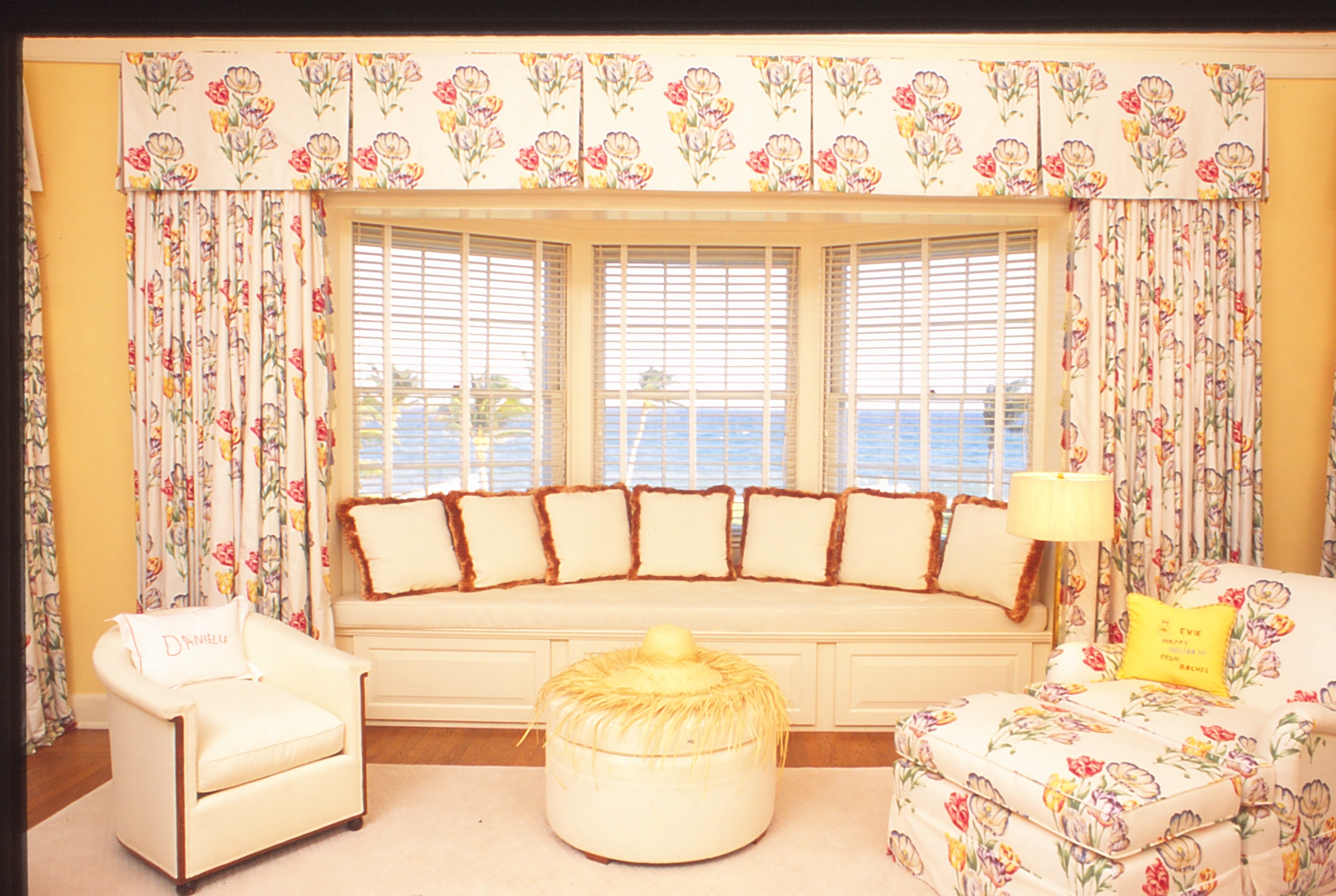
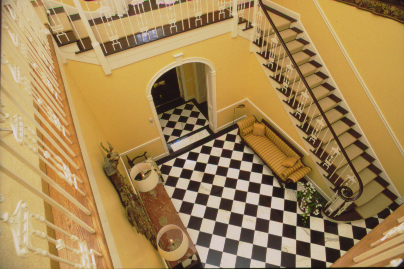
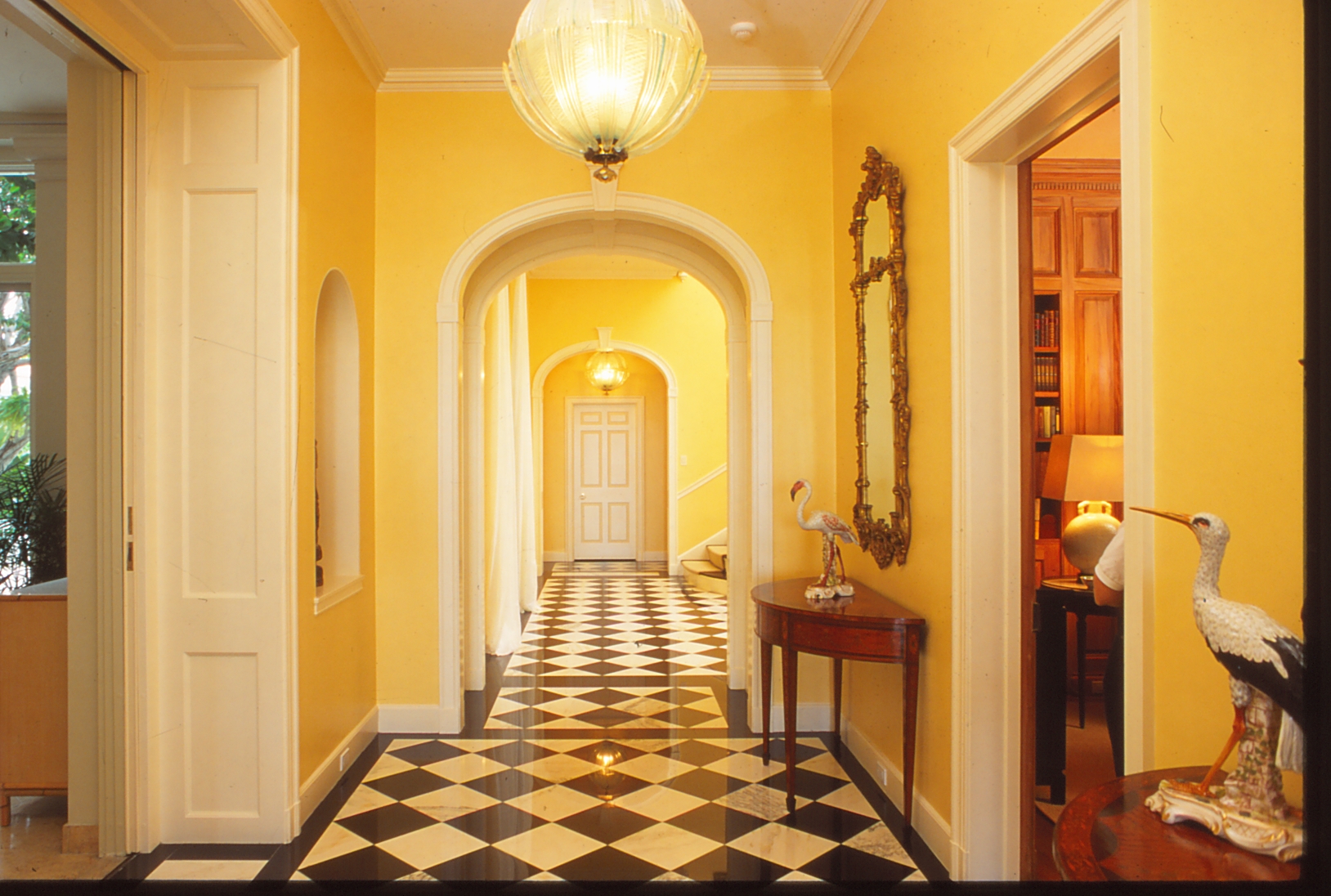
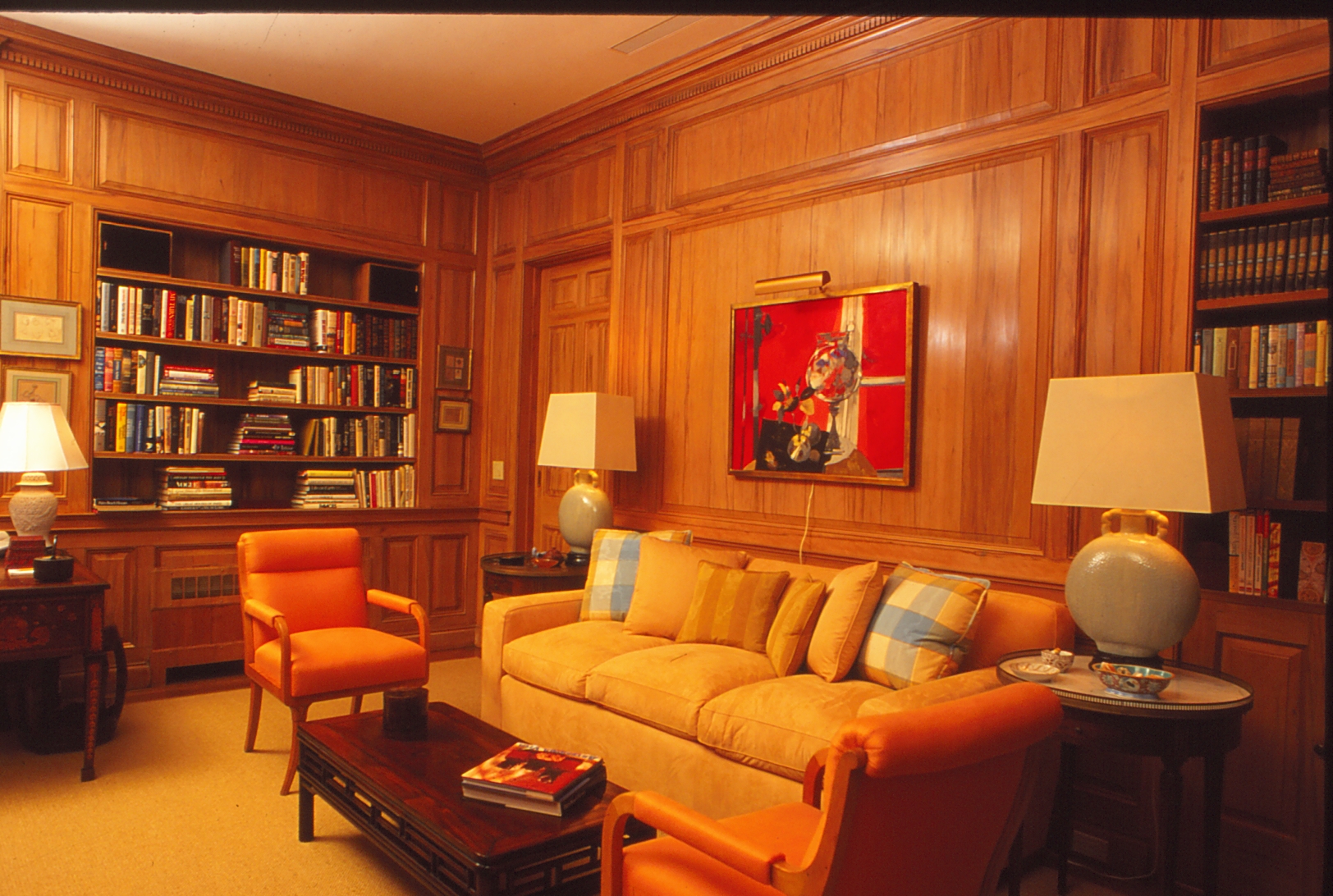
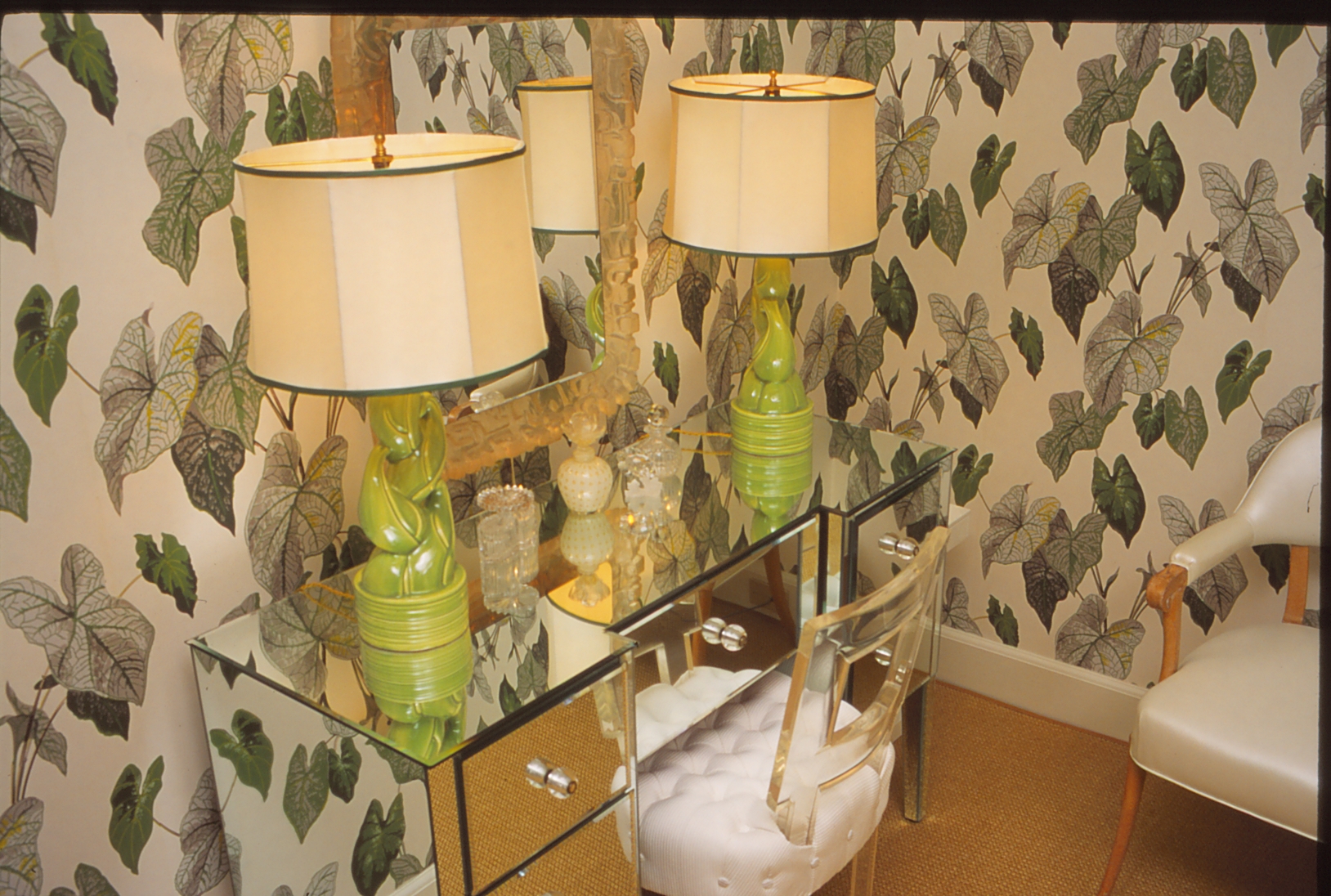
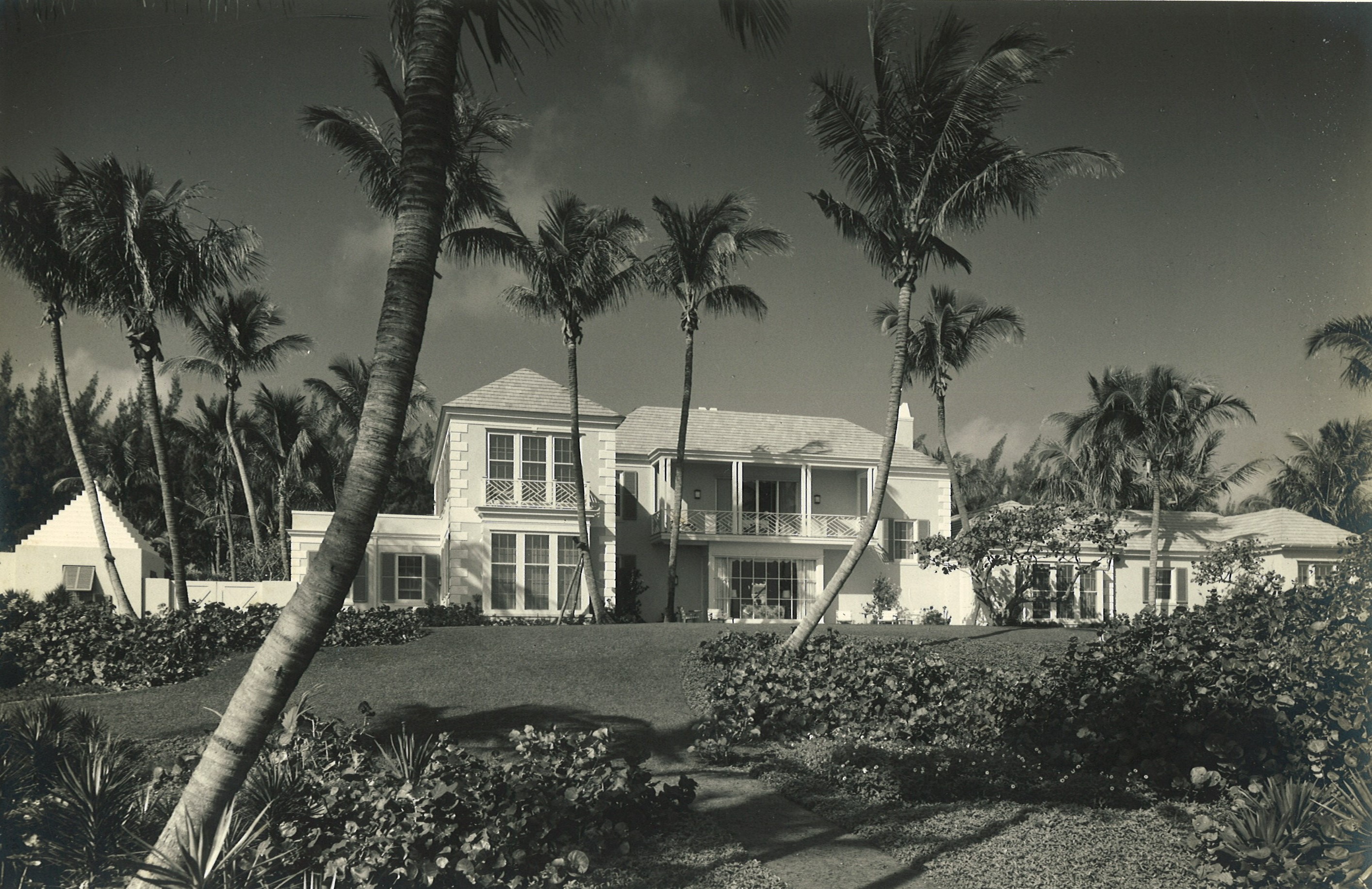
John B. Ford House
John B. Ford House
The Georgian style house with Bermuda influence in Hobe Sound was designed in 1965 by John Volk for John B. Ford, Jr. Ford was chairman of the family-owned company Wyandotte Chemical Company, headquartered in his home state of Michigan. Ford was also known for his revitalization of the Detroit Symphony in the 1950s.1
1. Darrell Hofheinz, Palm Beach Daily News

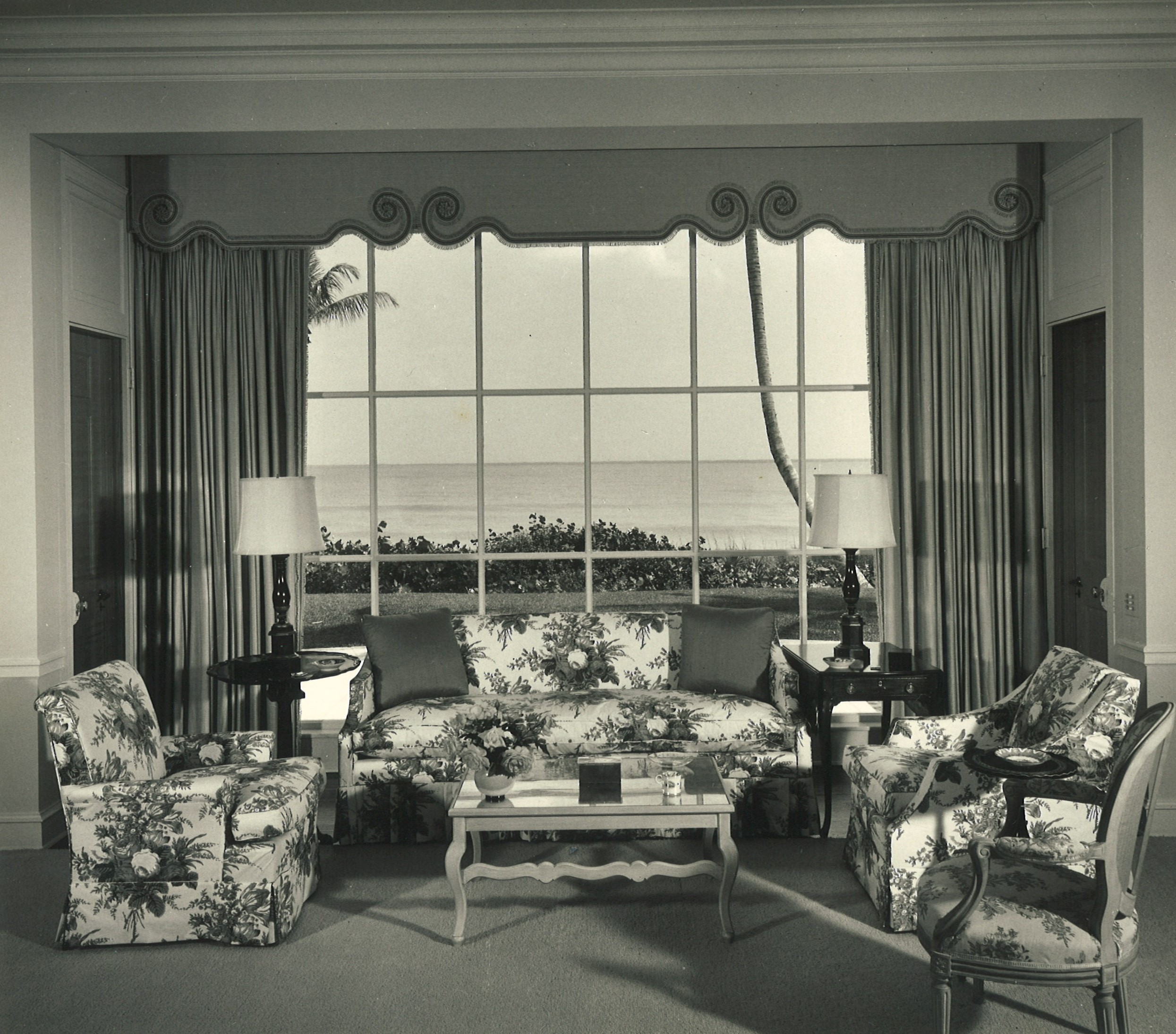
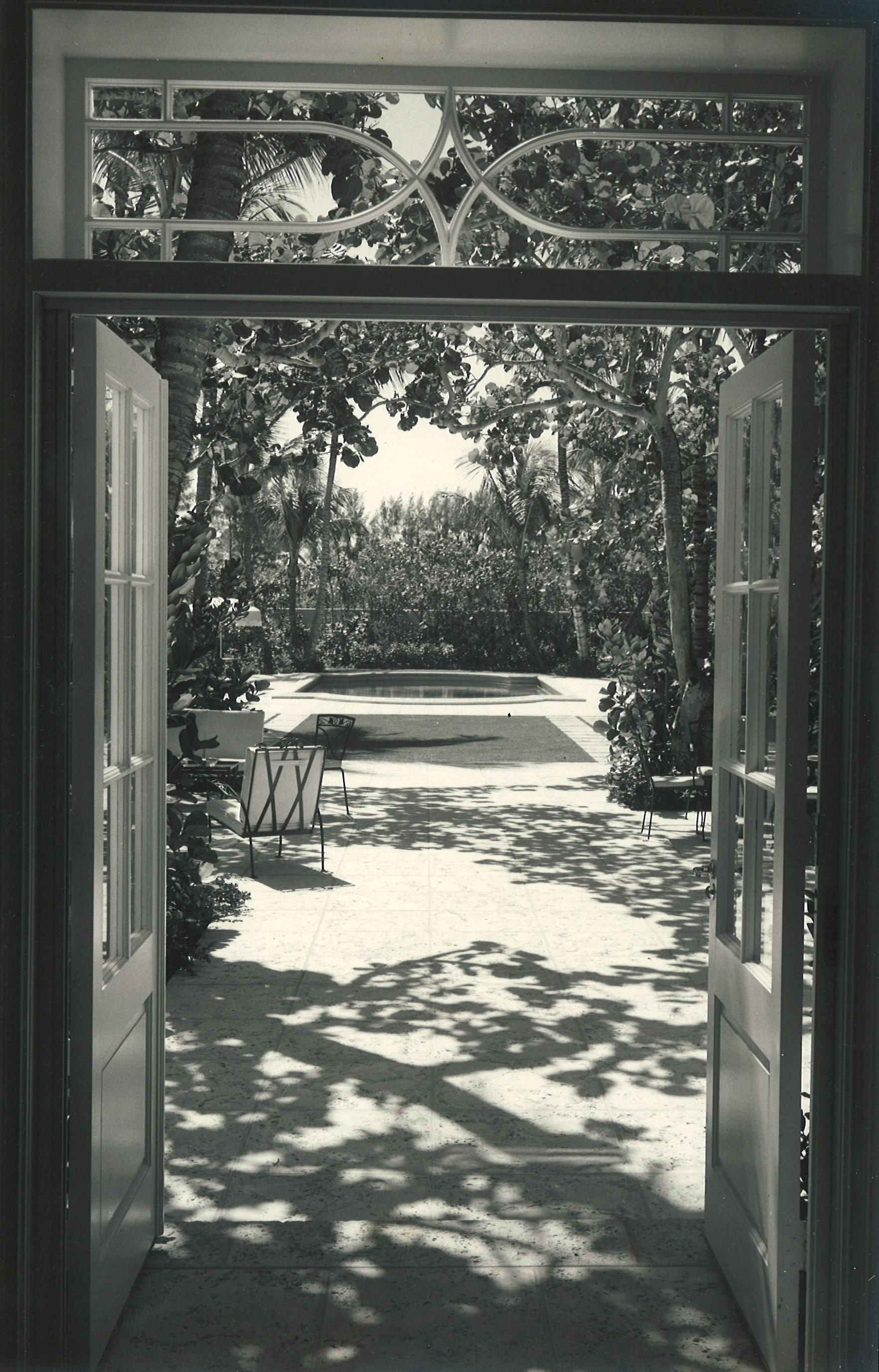
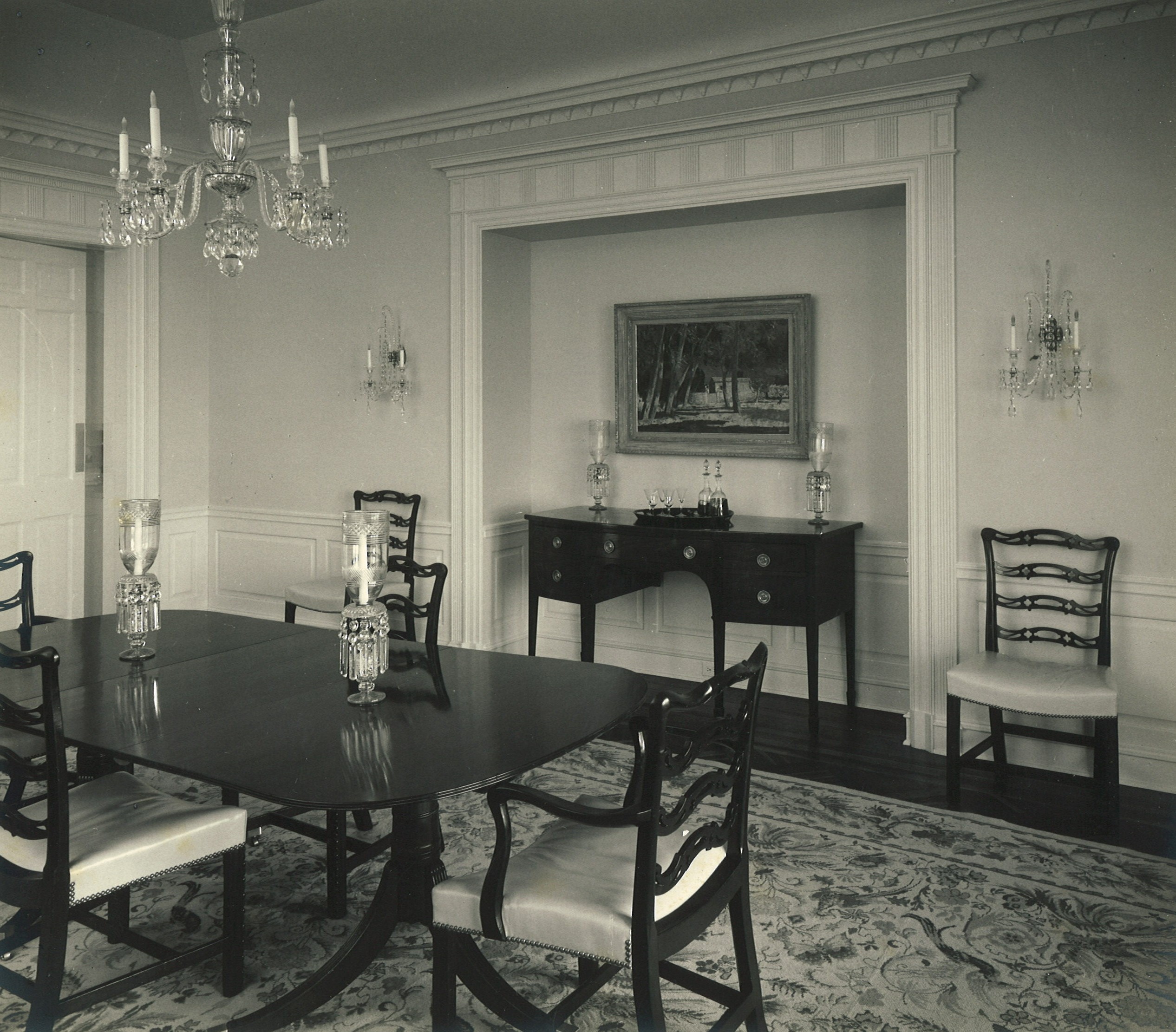
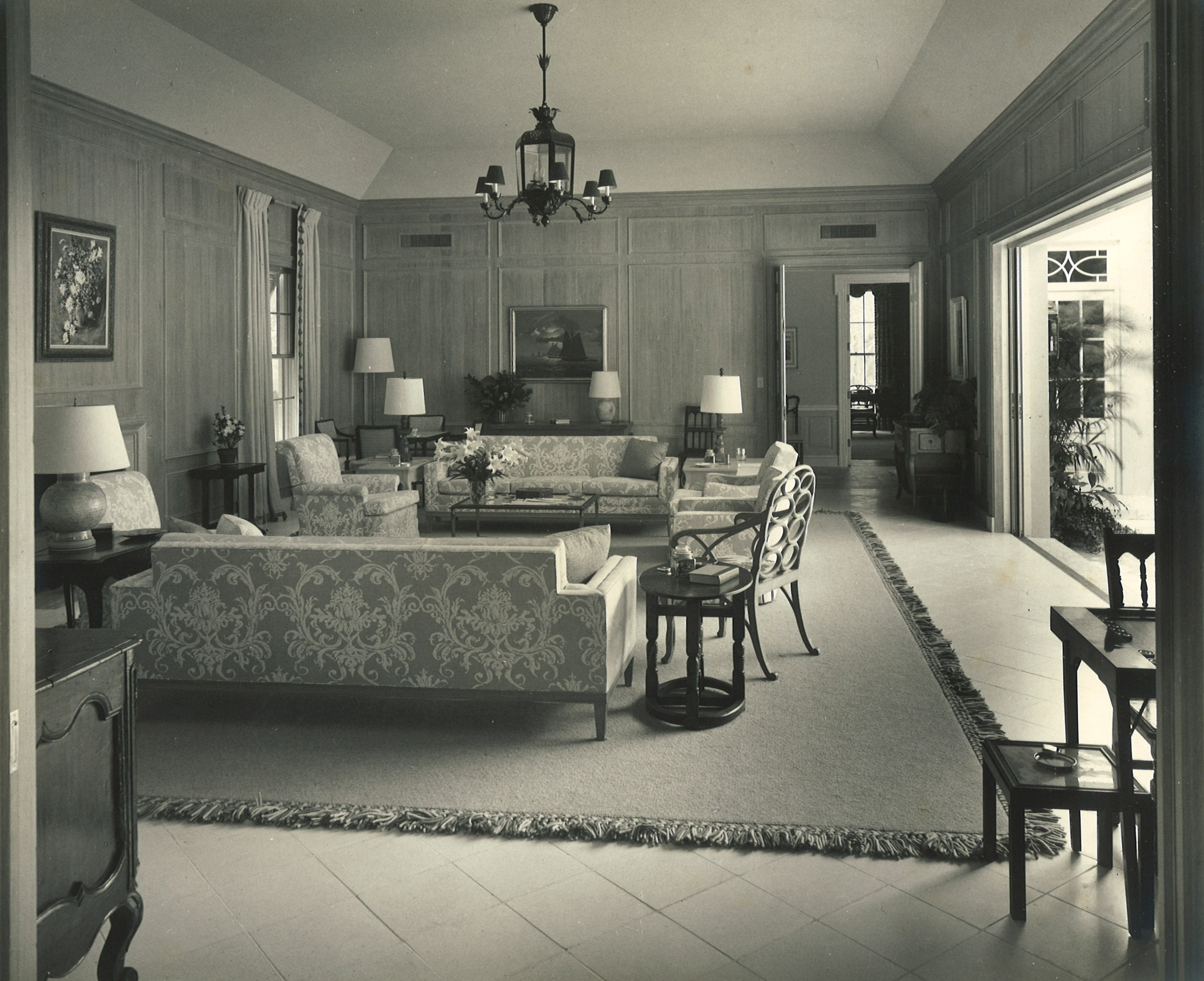
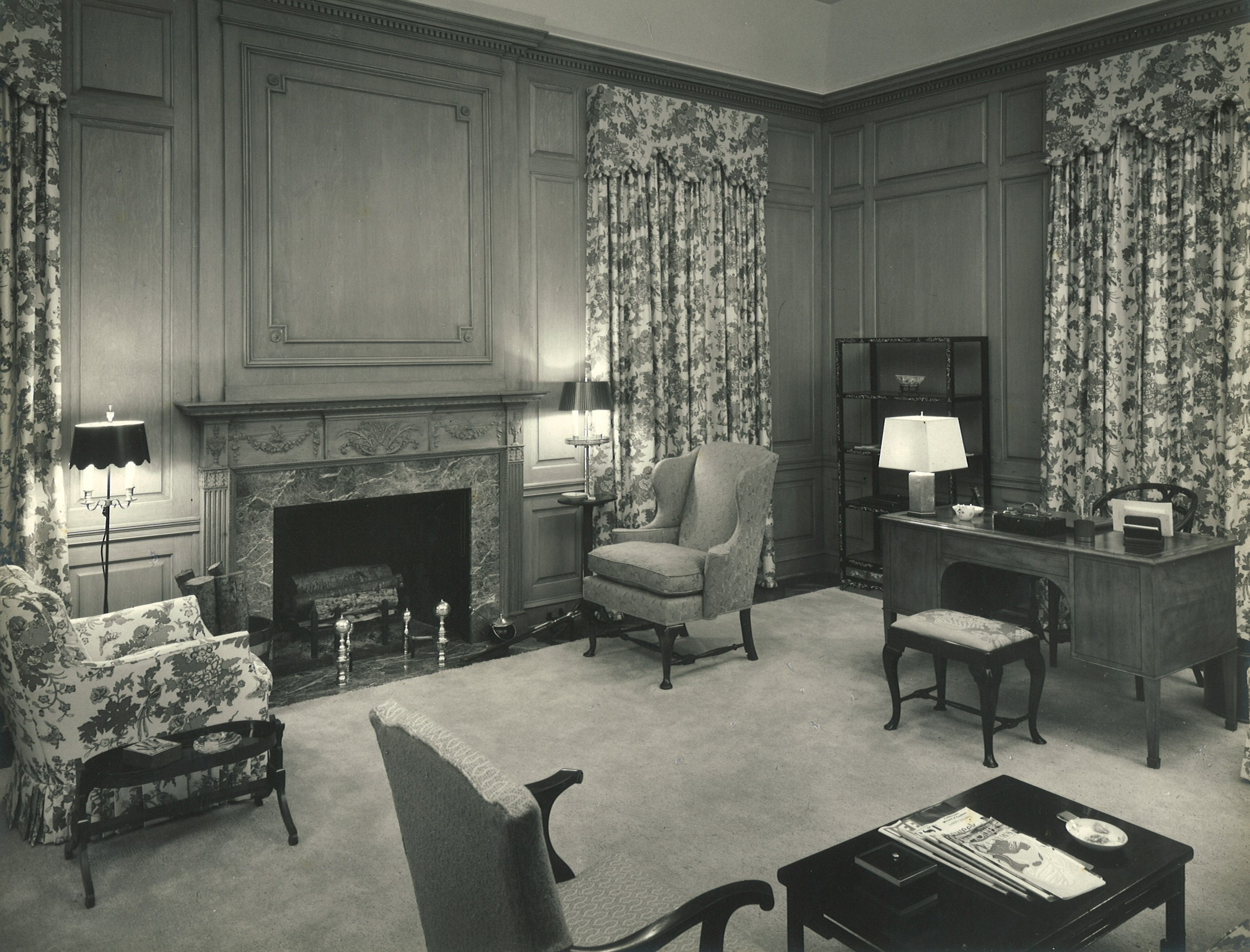
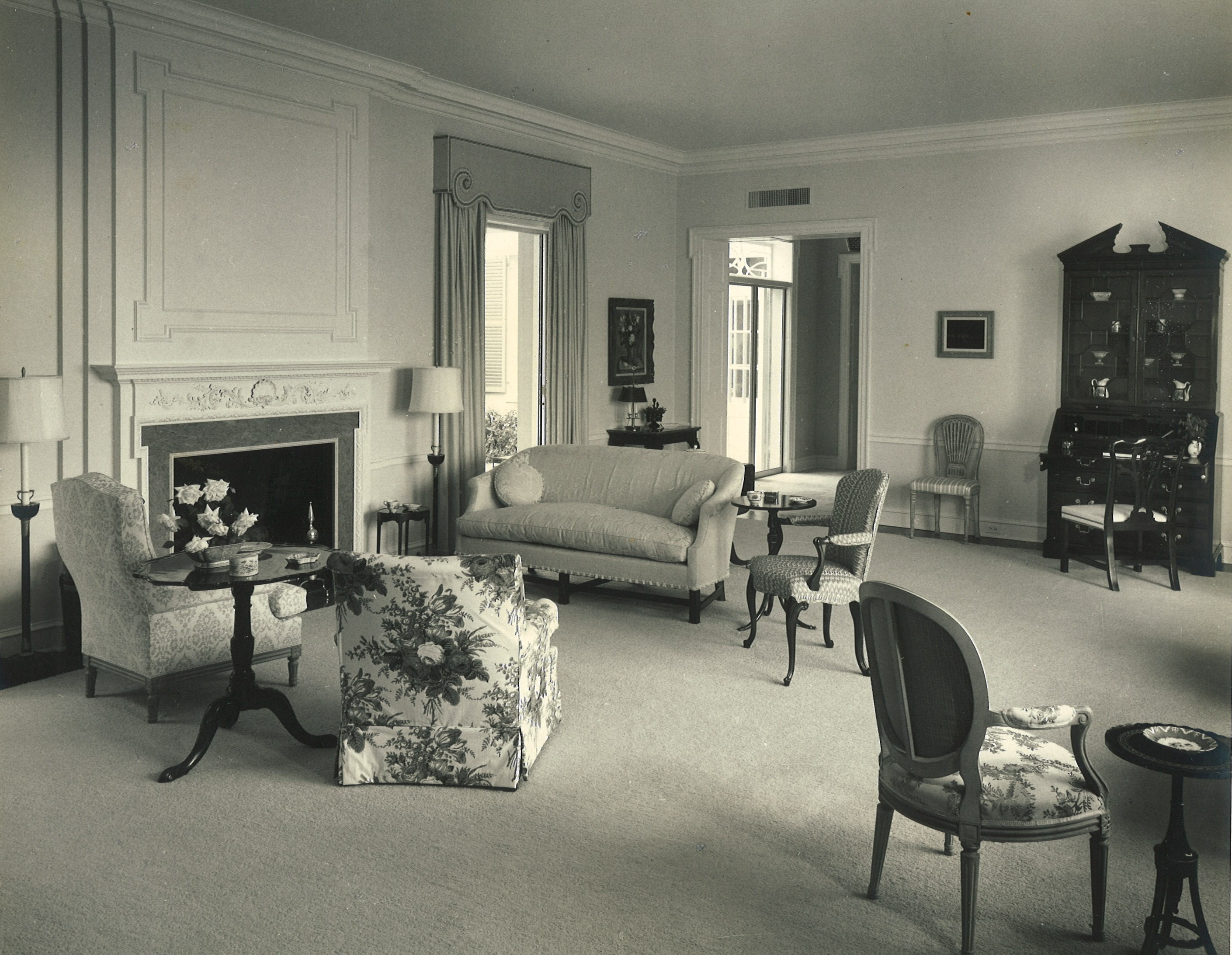
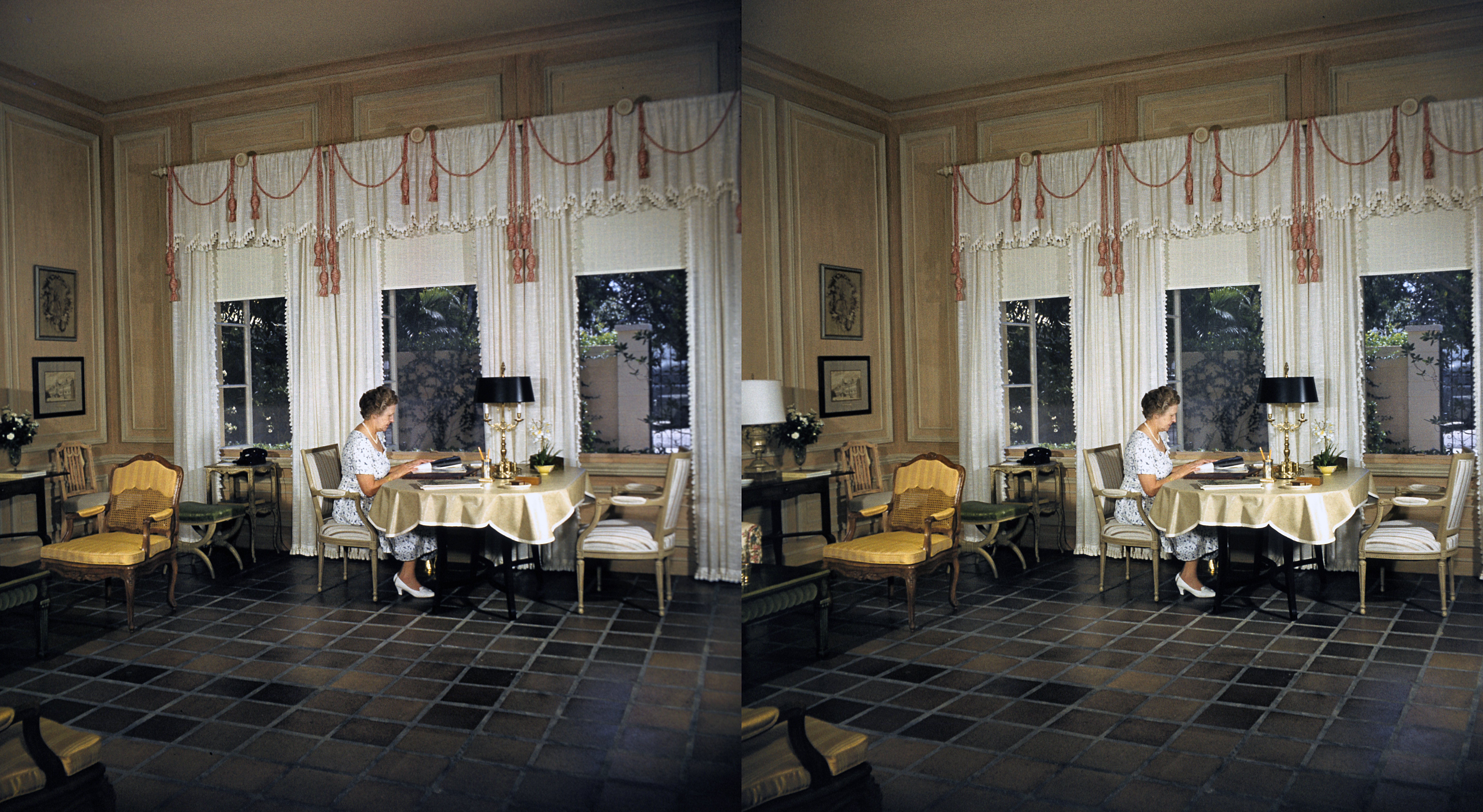
History of Stereographs
History of Stereographs
The few color photographs of Polly Jessup’s work that exist come from the Daniel’s personal collection of stereographs that depict Mrs. Jessup’s residence at 209 Phipps Plaza. Her use of pattern and color created lush, rich, and beautiful designs for her personal home. The images can be viewed through the light viewer giving them a 3D affect.
The first effect of looking at a good photograph through the stereoscope is a surprise such as no painting ever produced. The mind feels its way into the very depths of the picture.
inventor of the first affordable home stereograph viewer
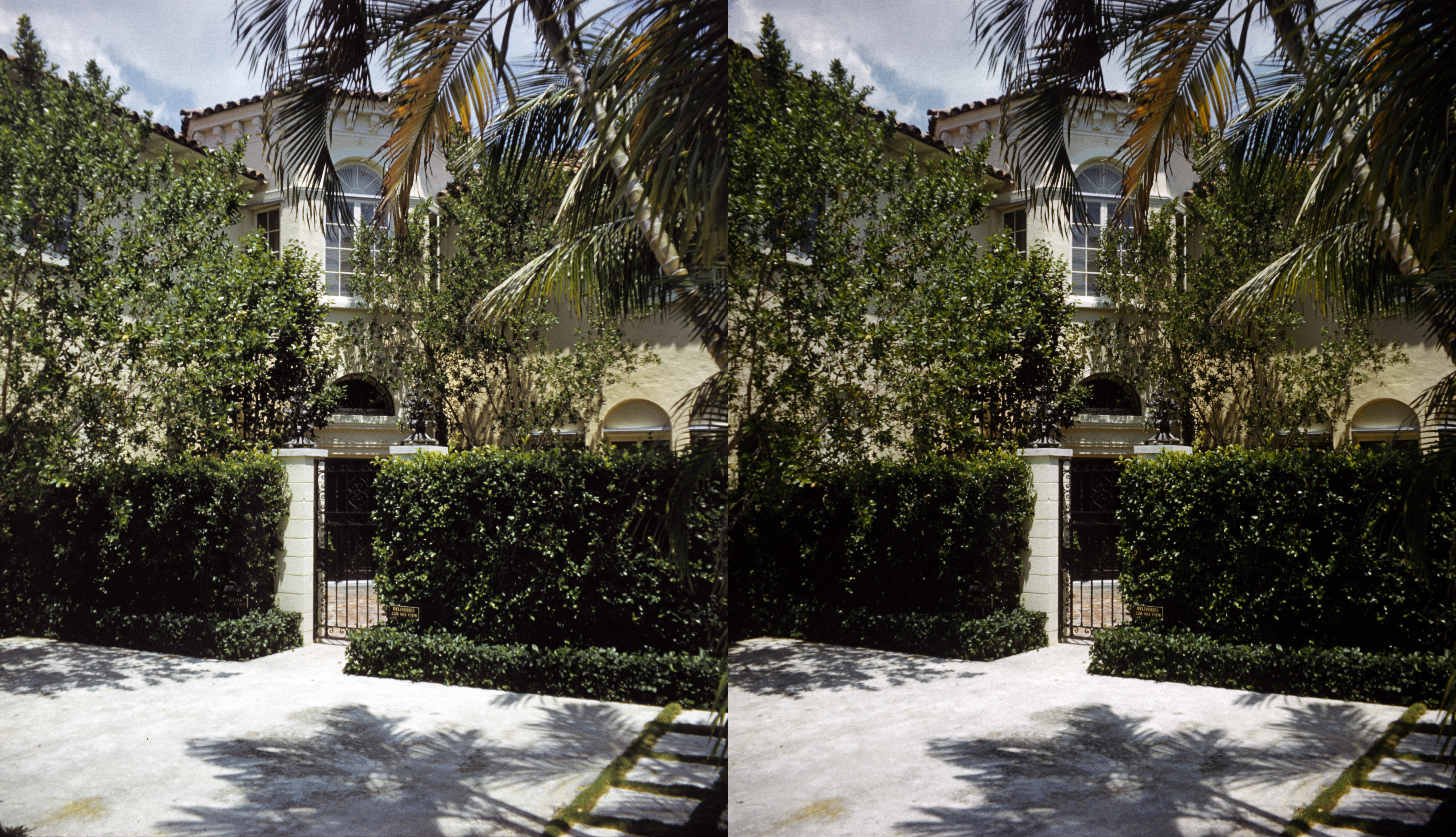
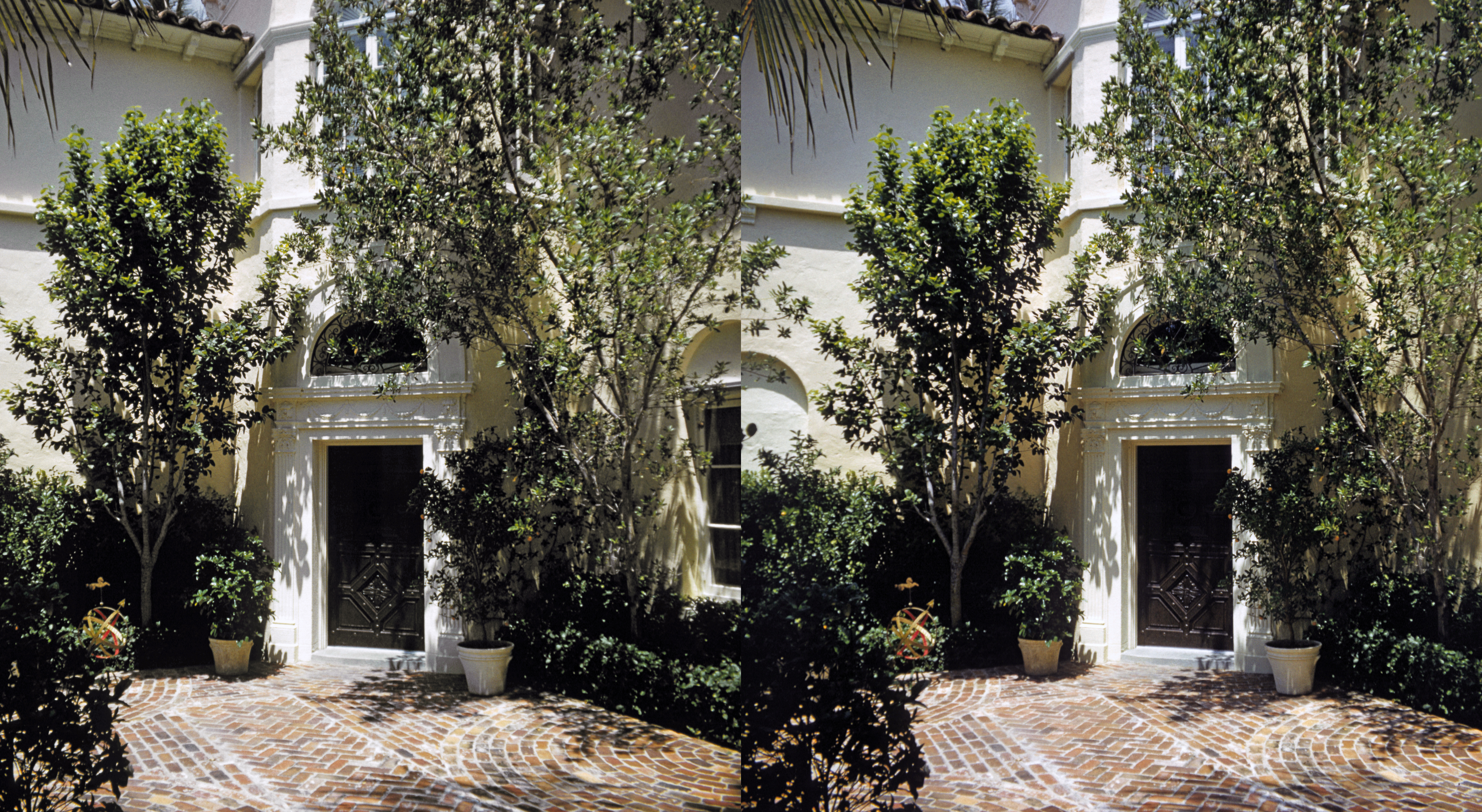
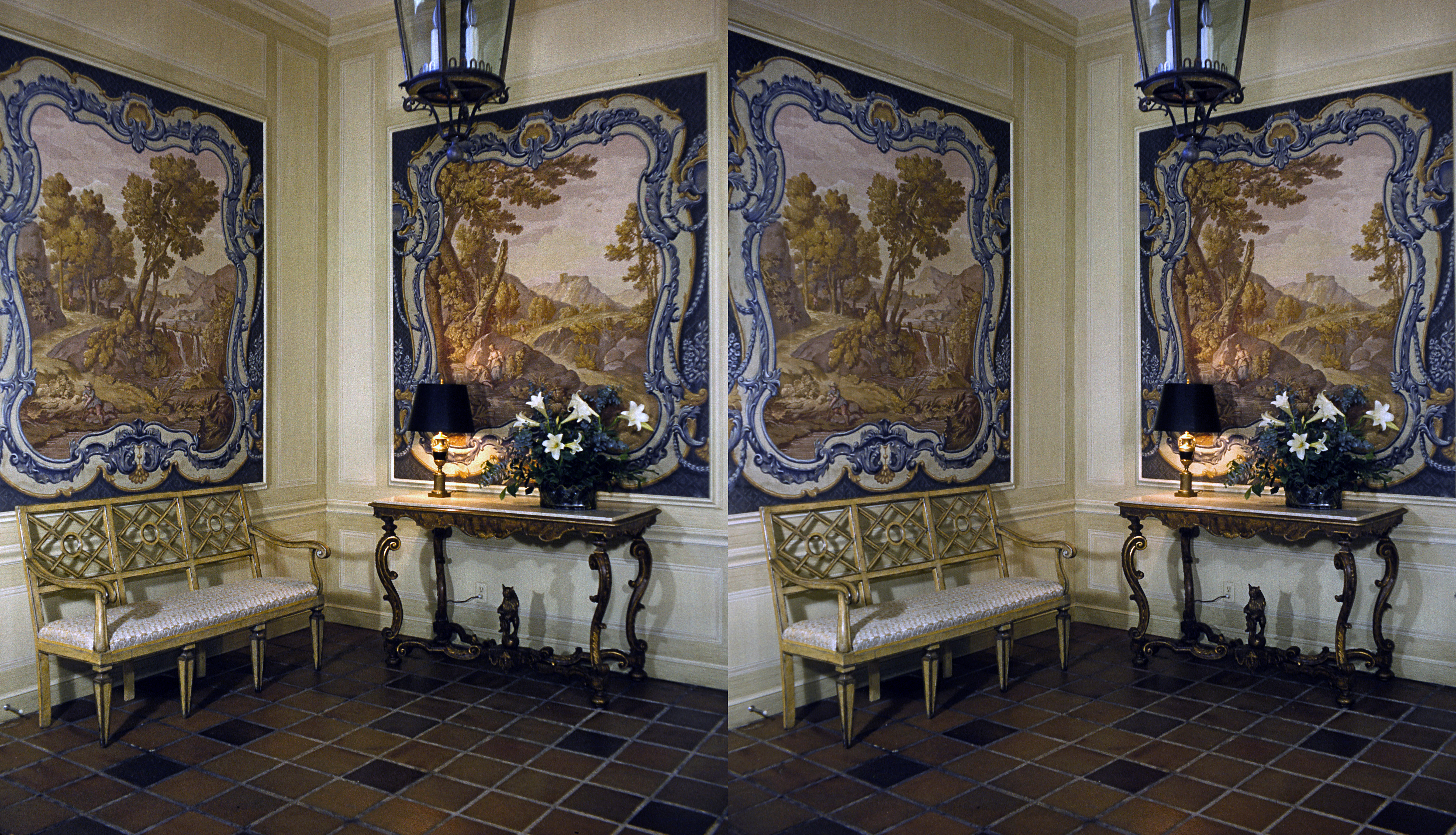


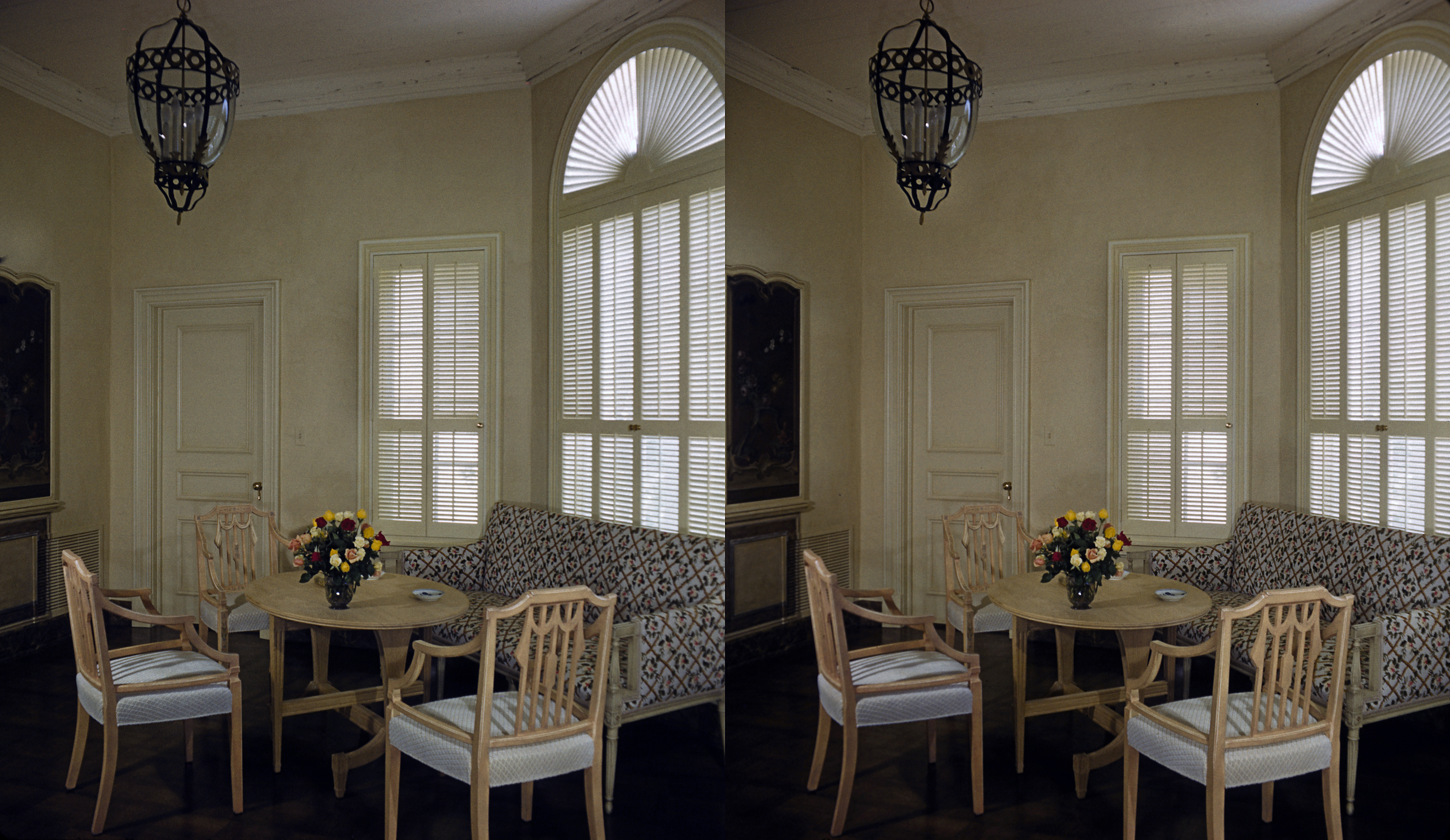
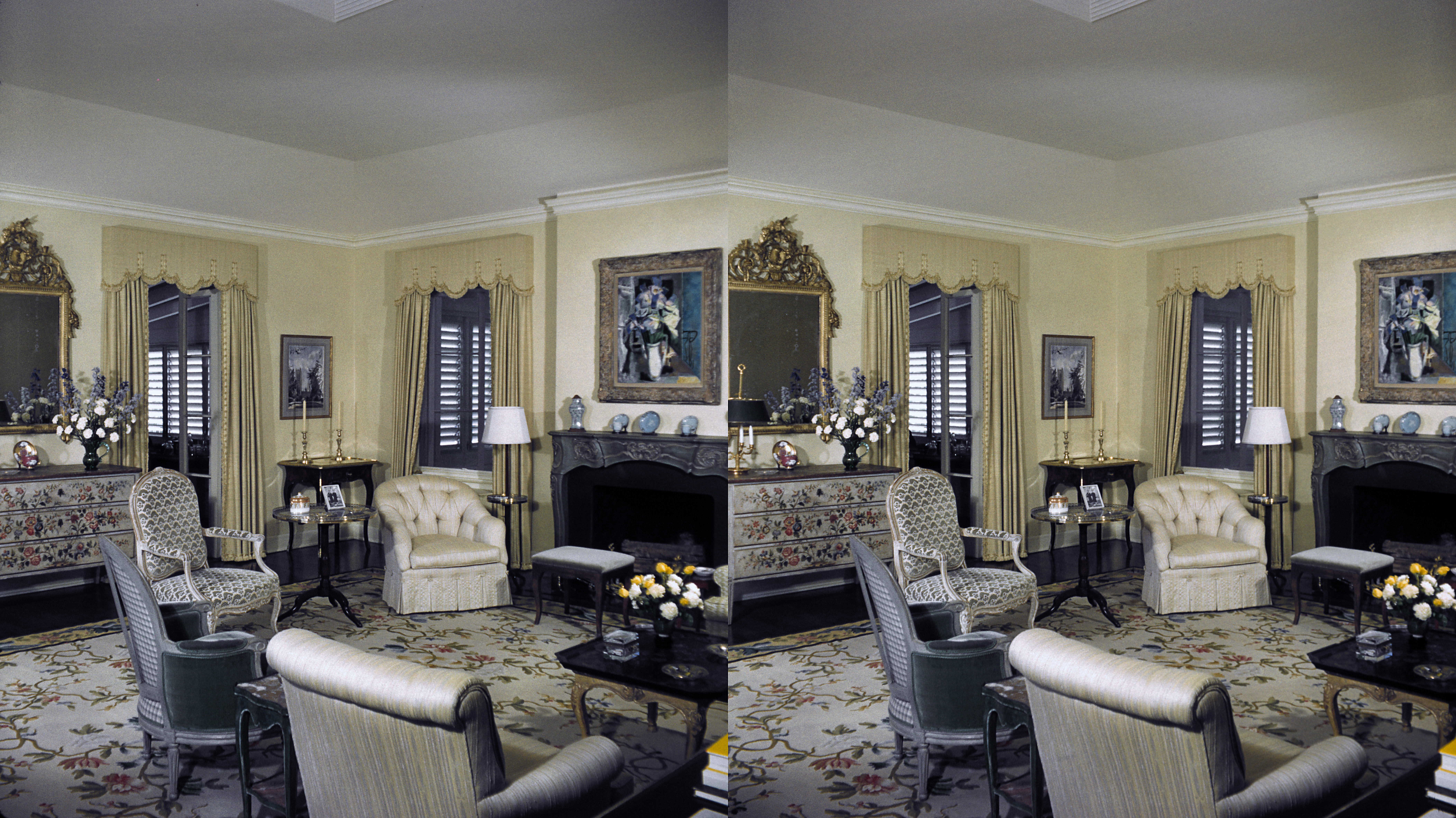
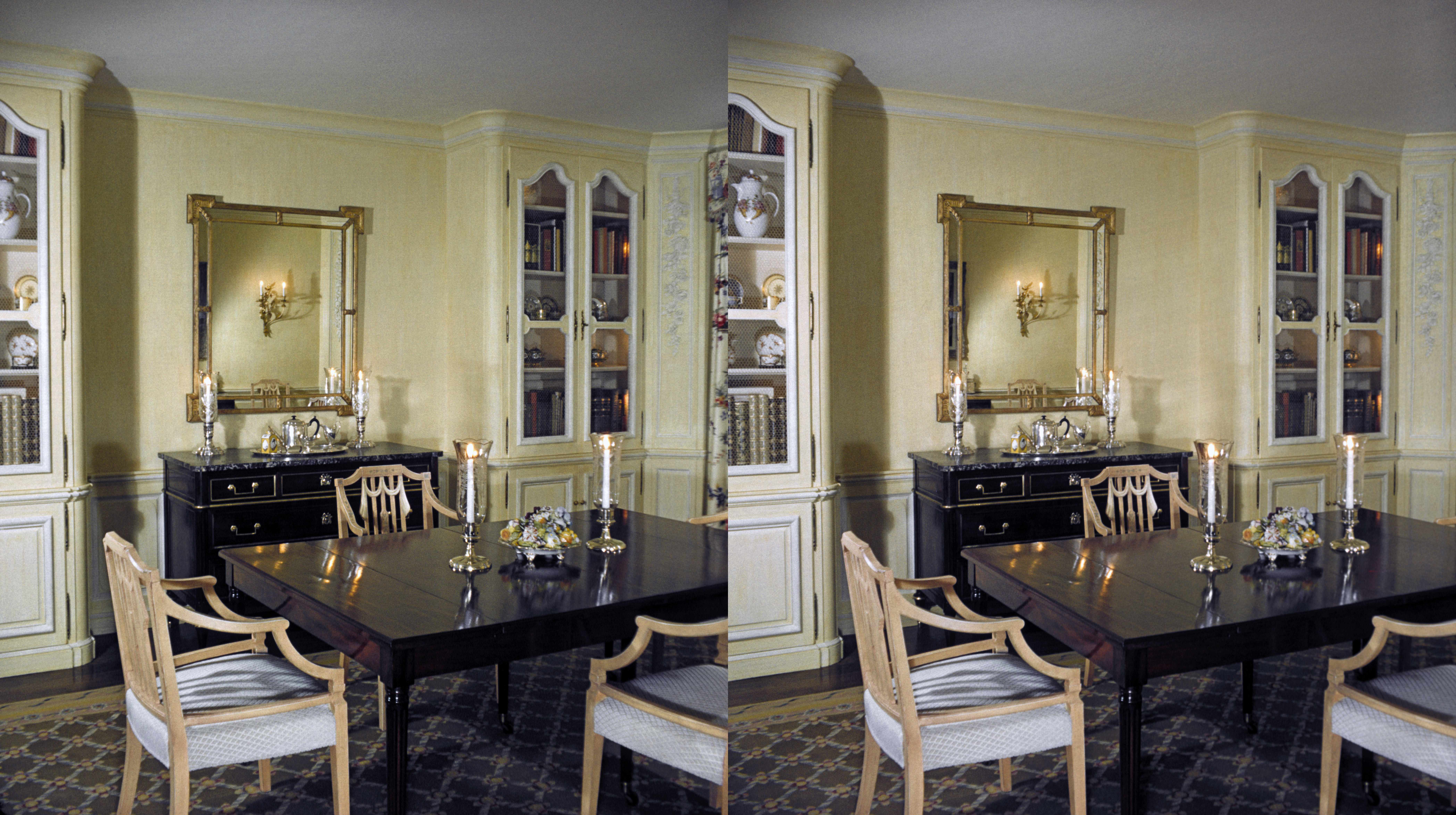
What is a stereograph?
The stereograph, an early three-dimensional photograph, was conceived in 1838. By the end of the 19th century, stereographic images of faraway lands and exotic scenes proliferated among journalists, students, and virtual tourists. The 20th century saw many iterations of the stereograph, the most common format being the popular children’s toy View-Master.
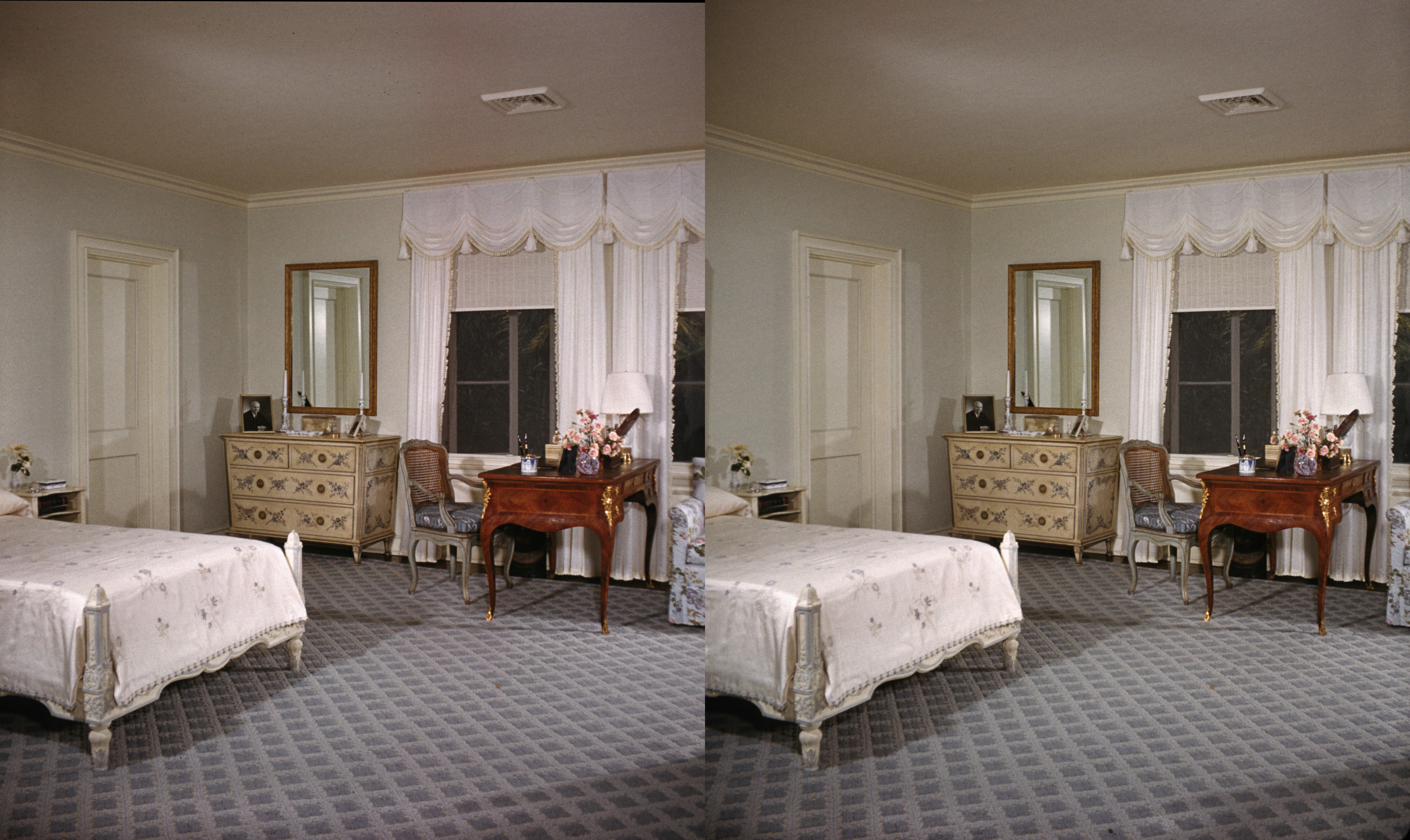
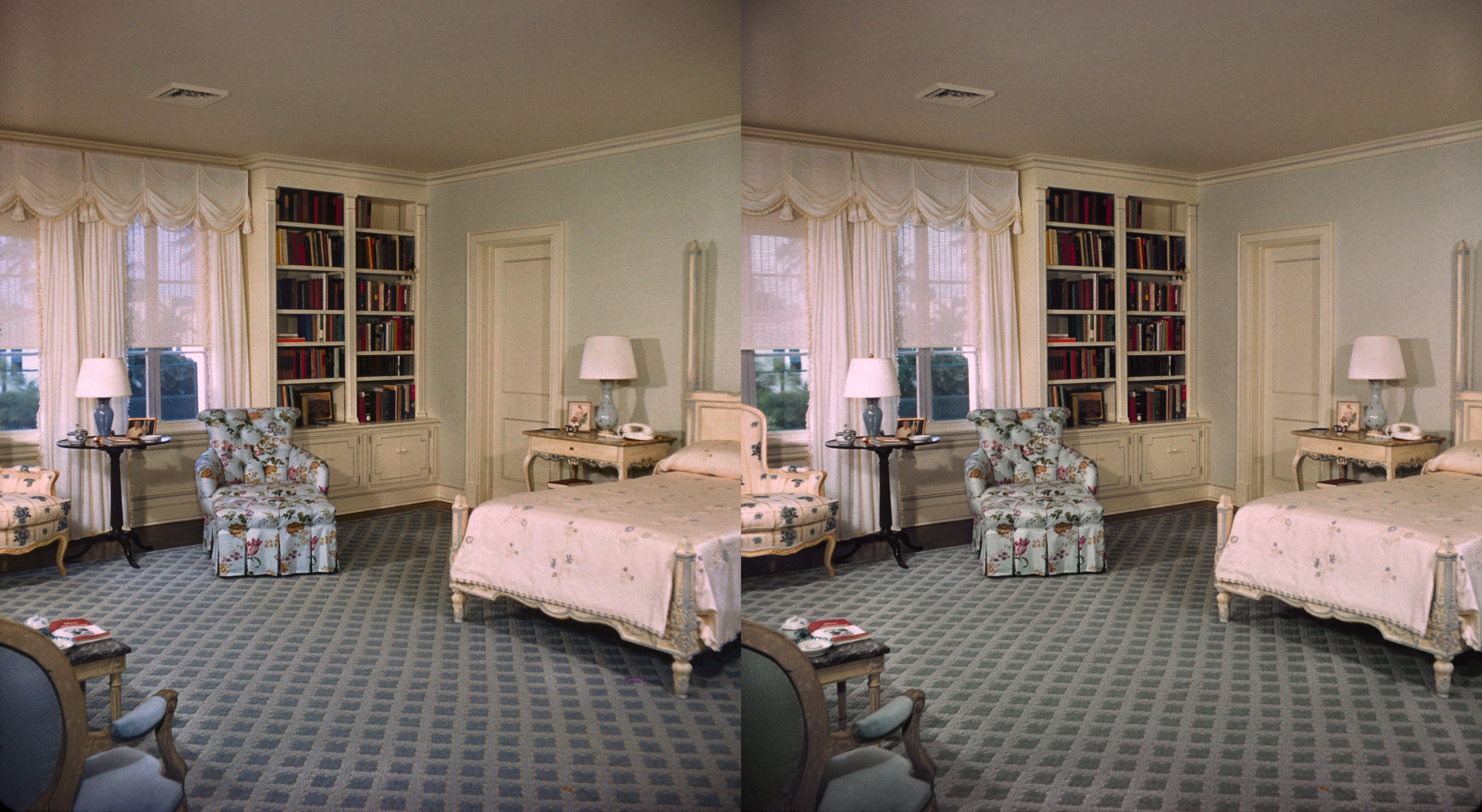
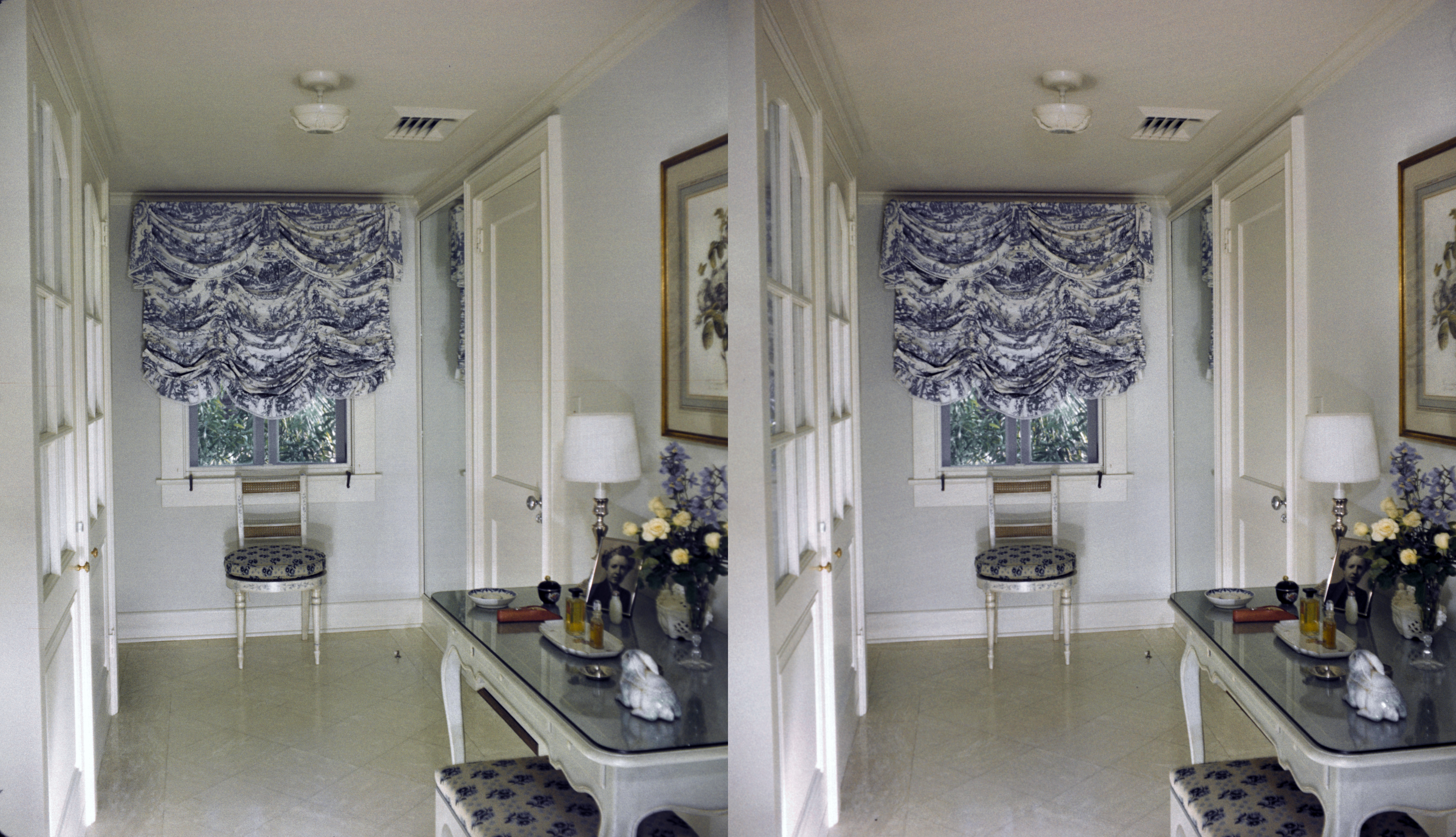
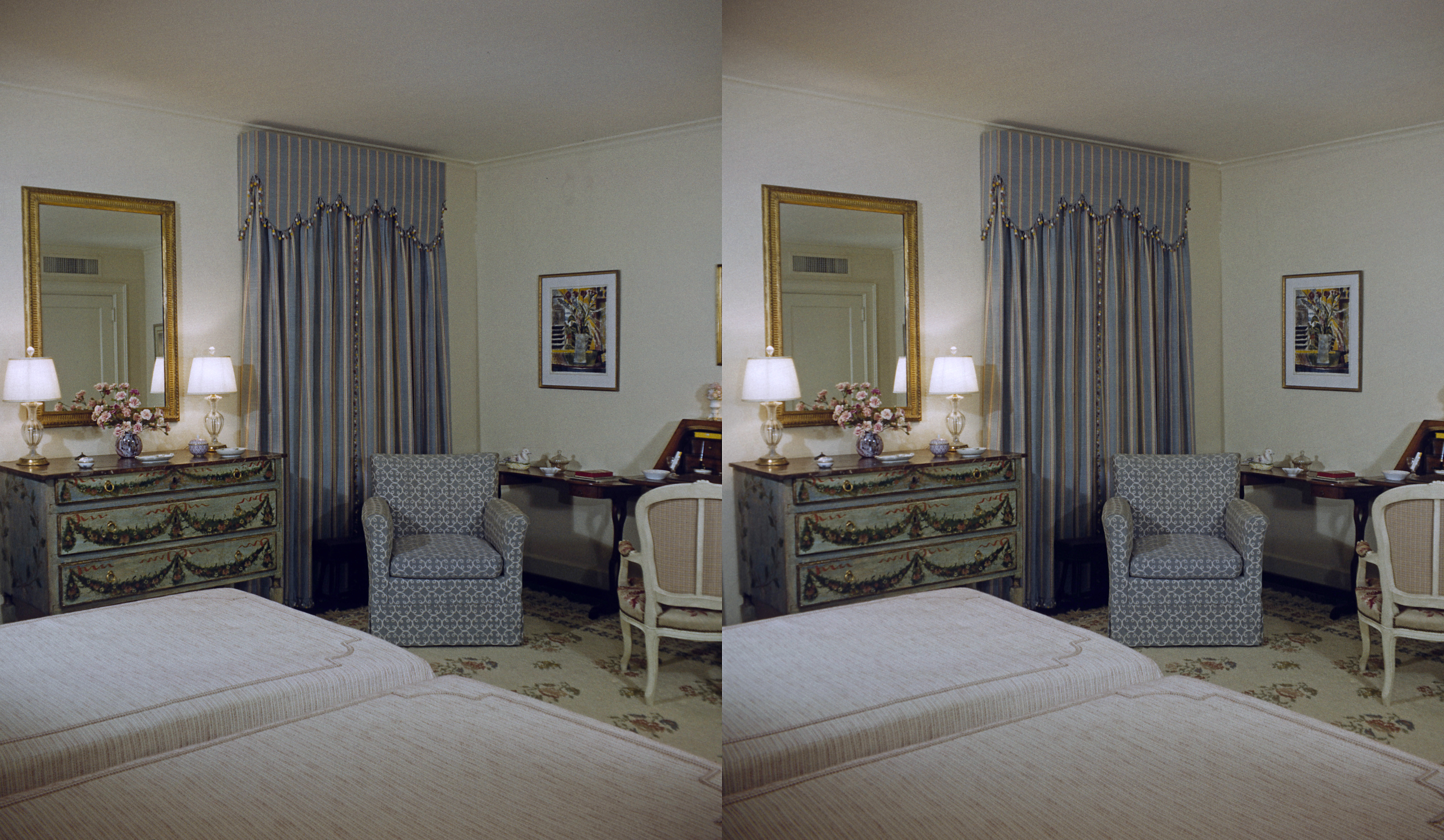
How does it work?
Traditional stereograph images are created by mounting two nearly-identical drawings or photographs side by side on cardboard or mounted in slide format. Looking inside the stereoscope viewer, each of the user’s eyes sees a different image, but the brain is “tricked” into merging them into one three-dimensional image.
